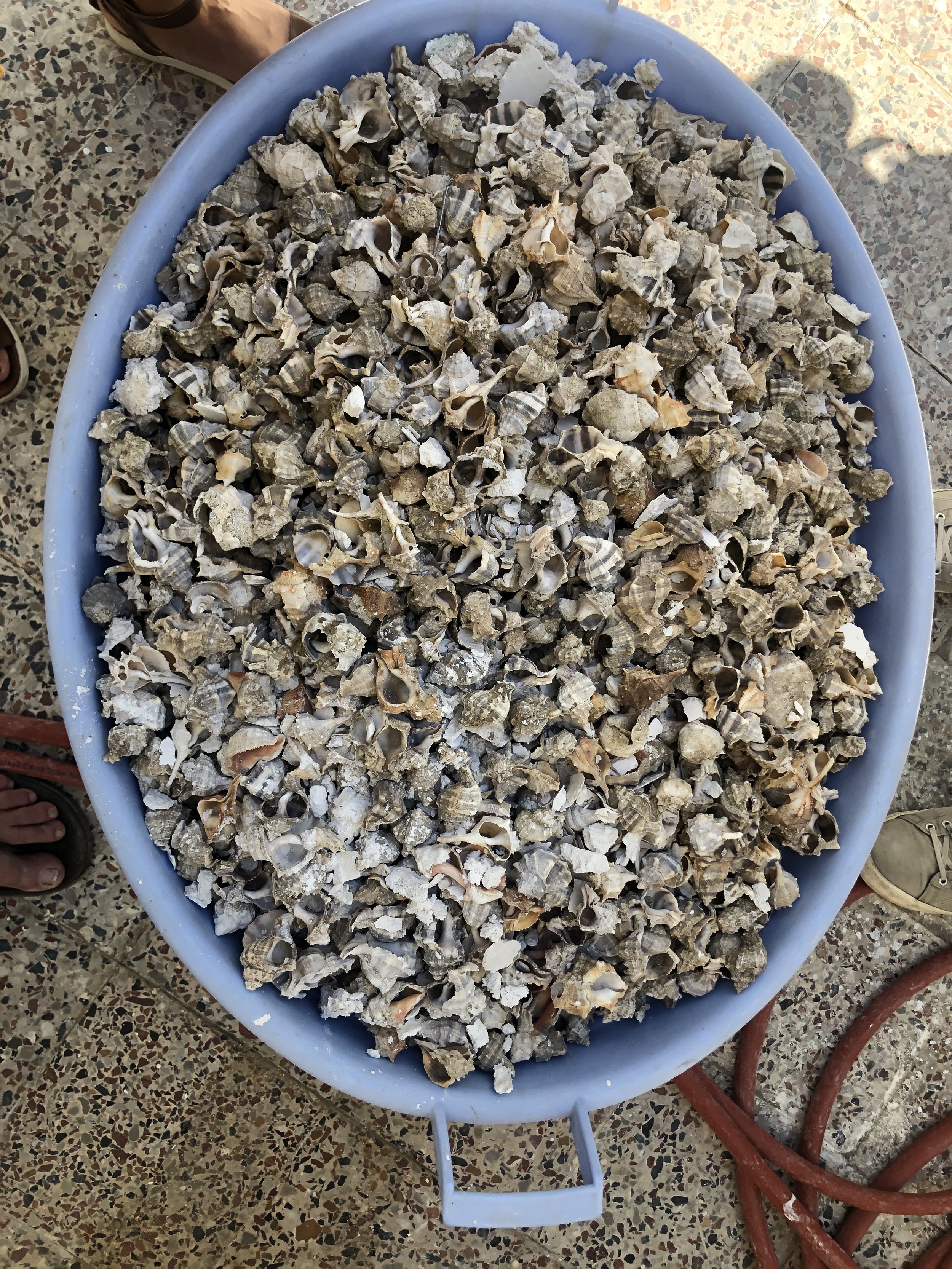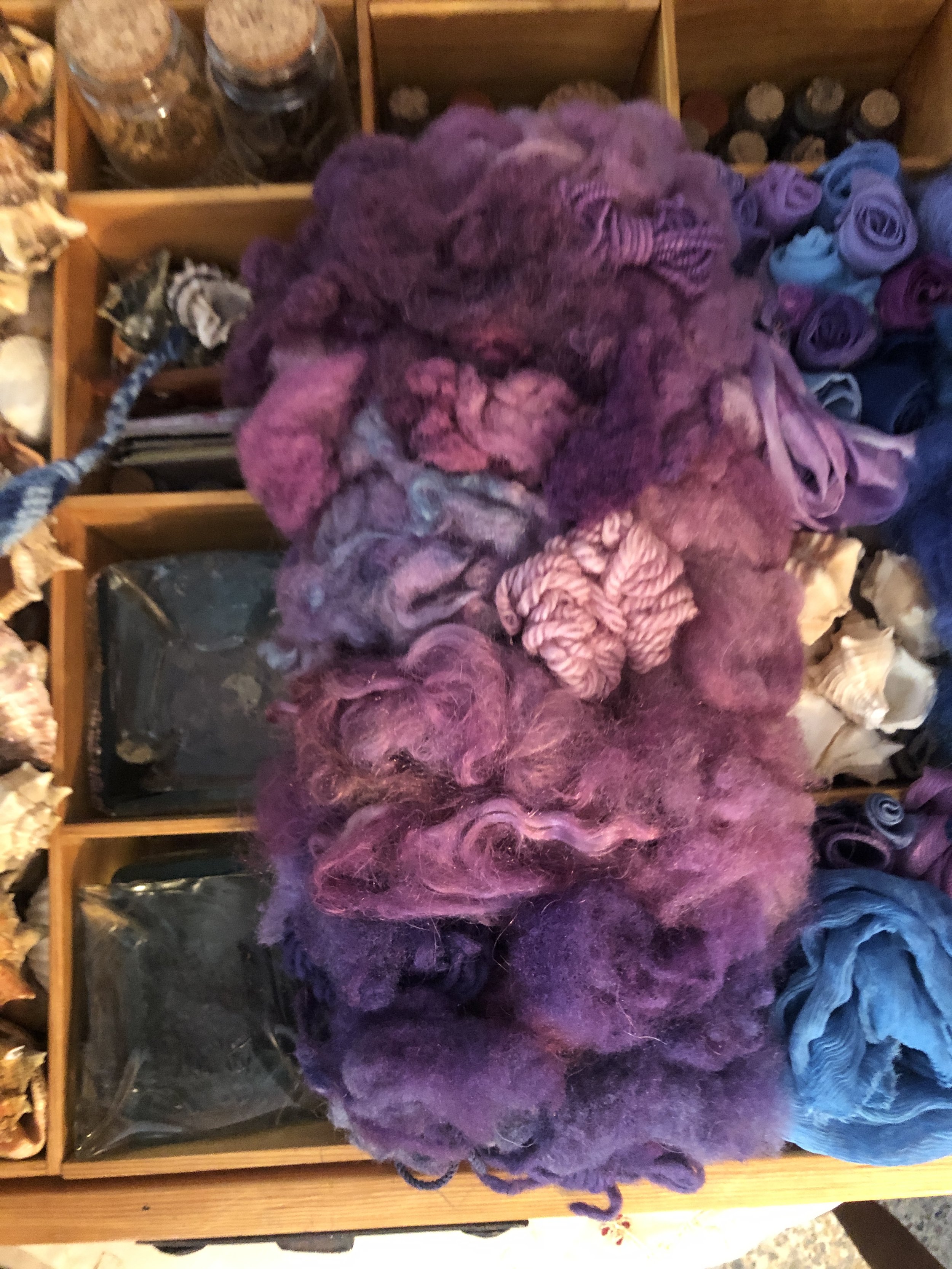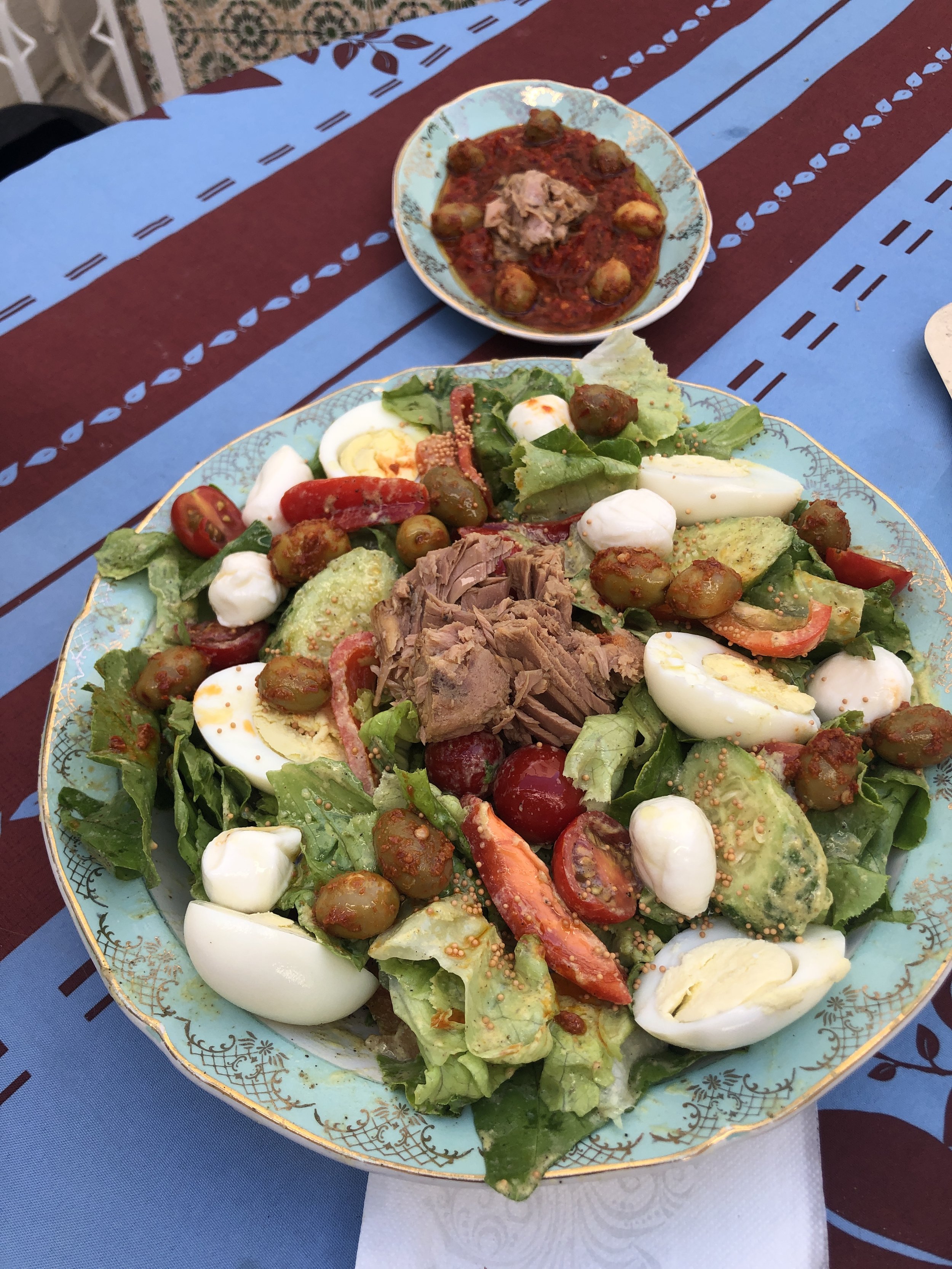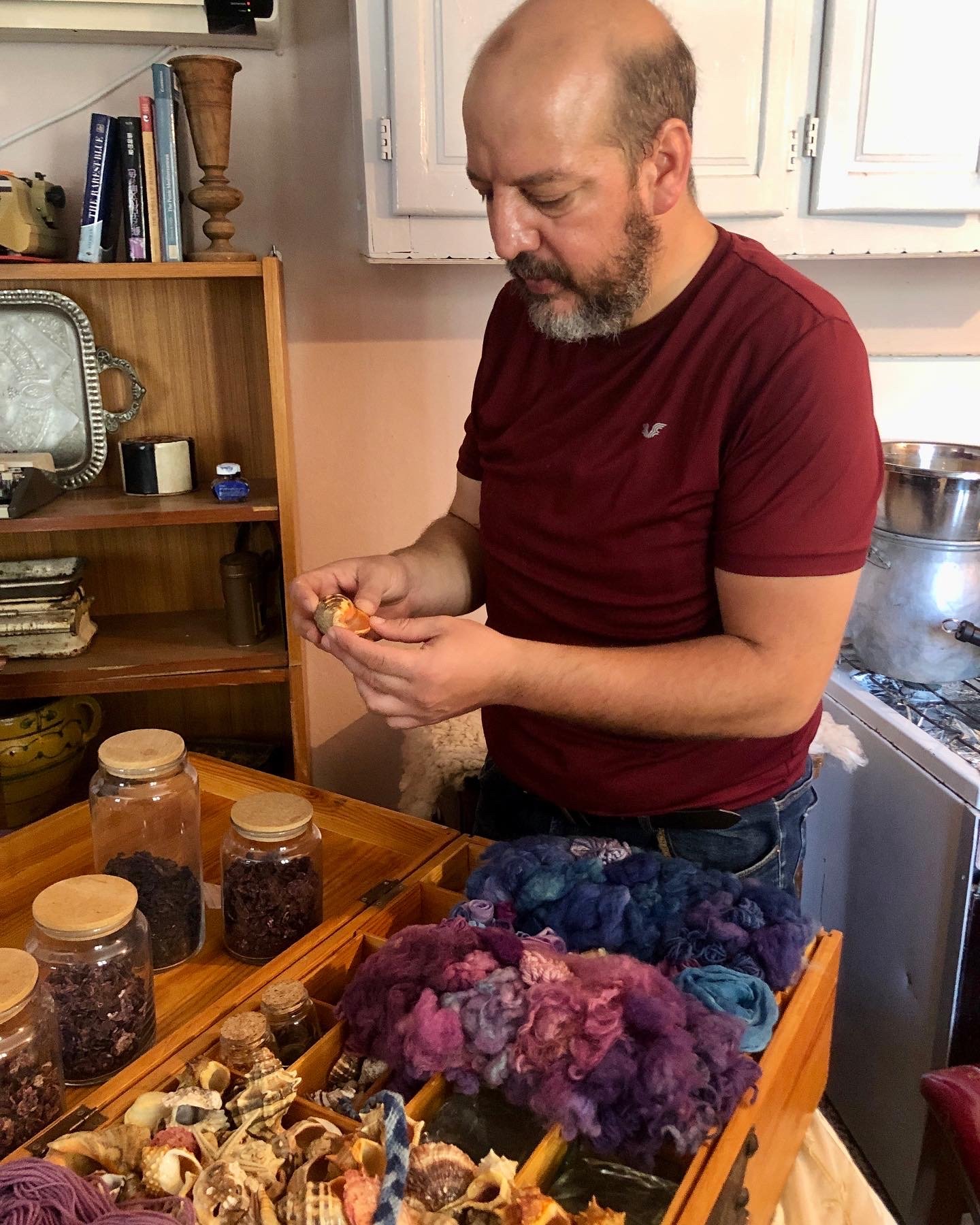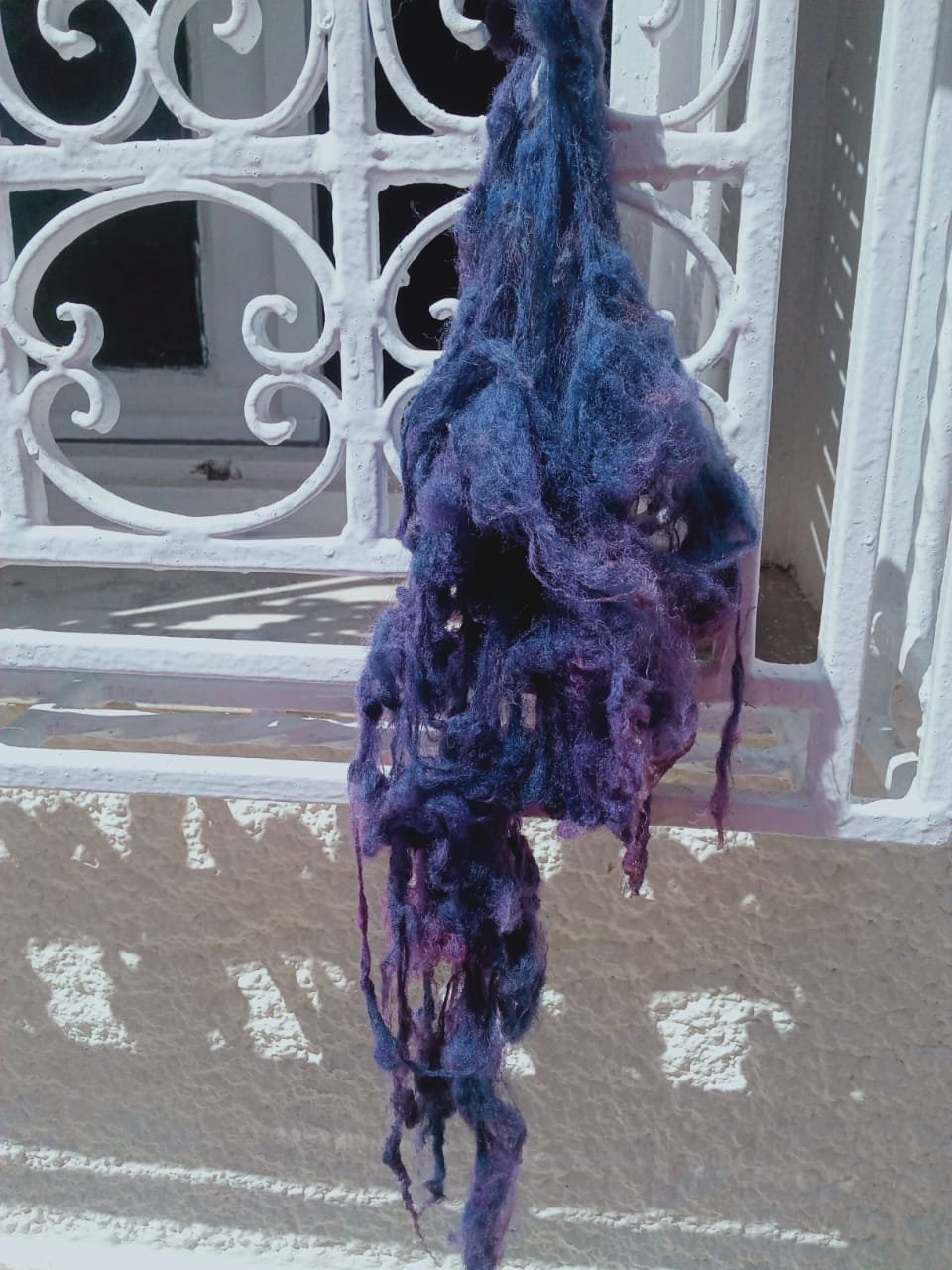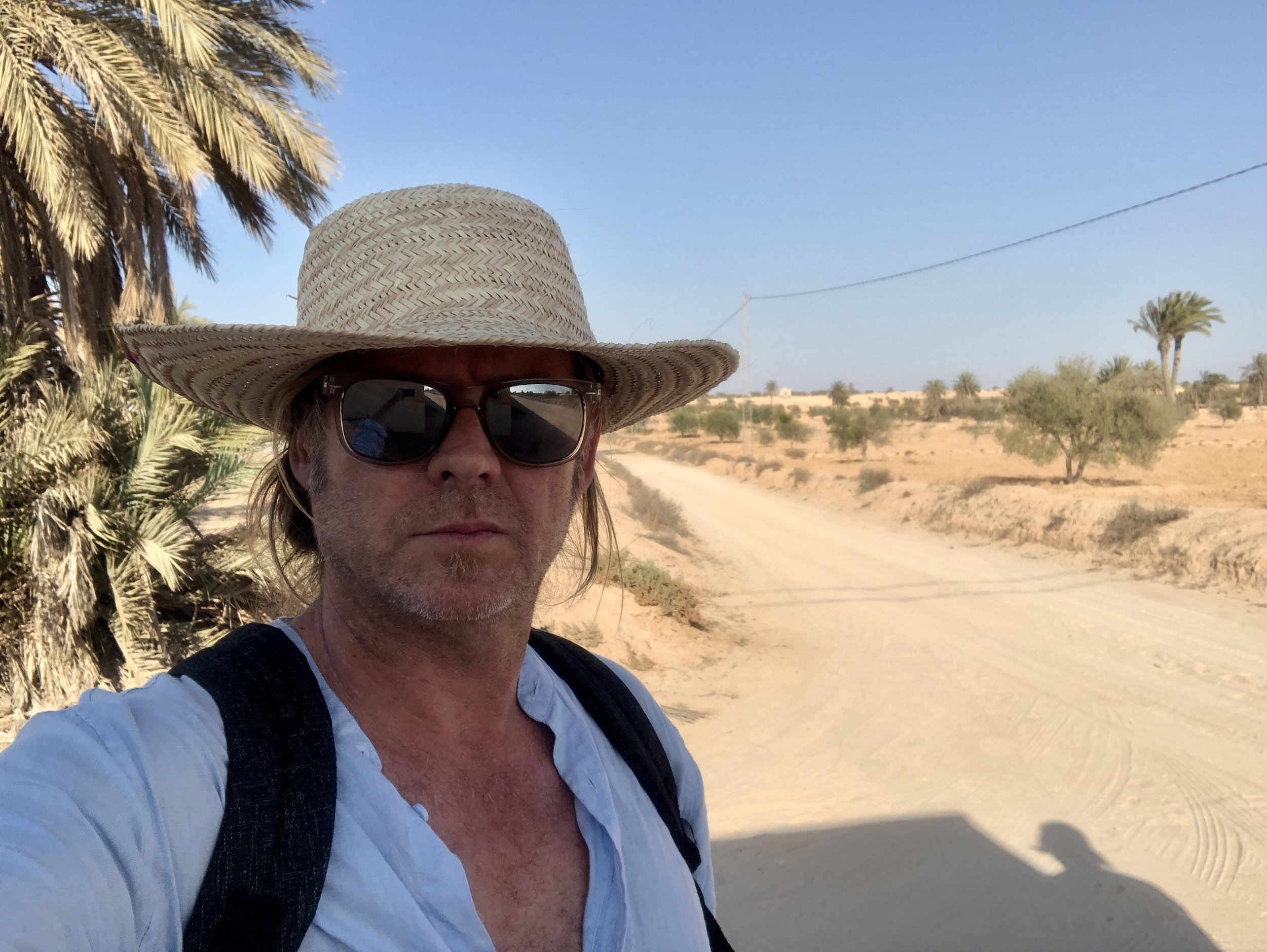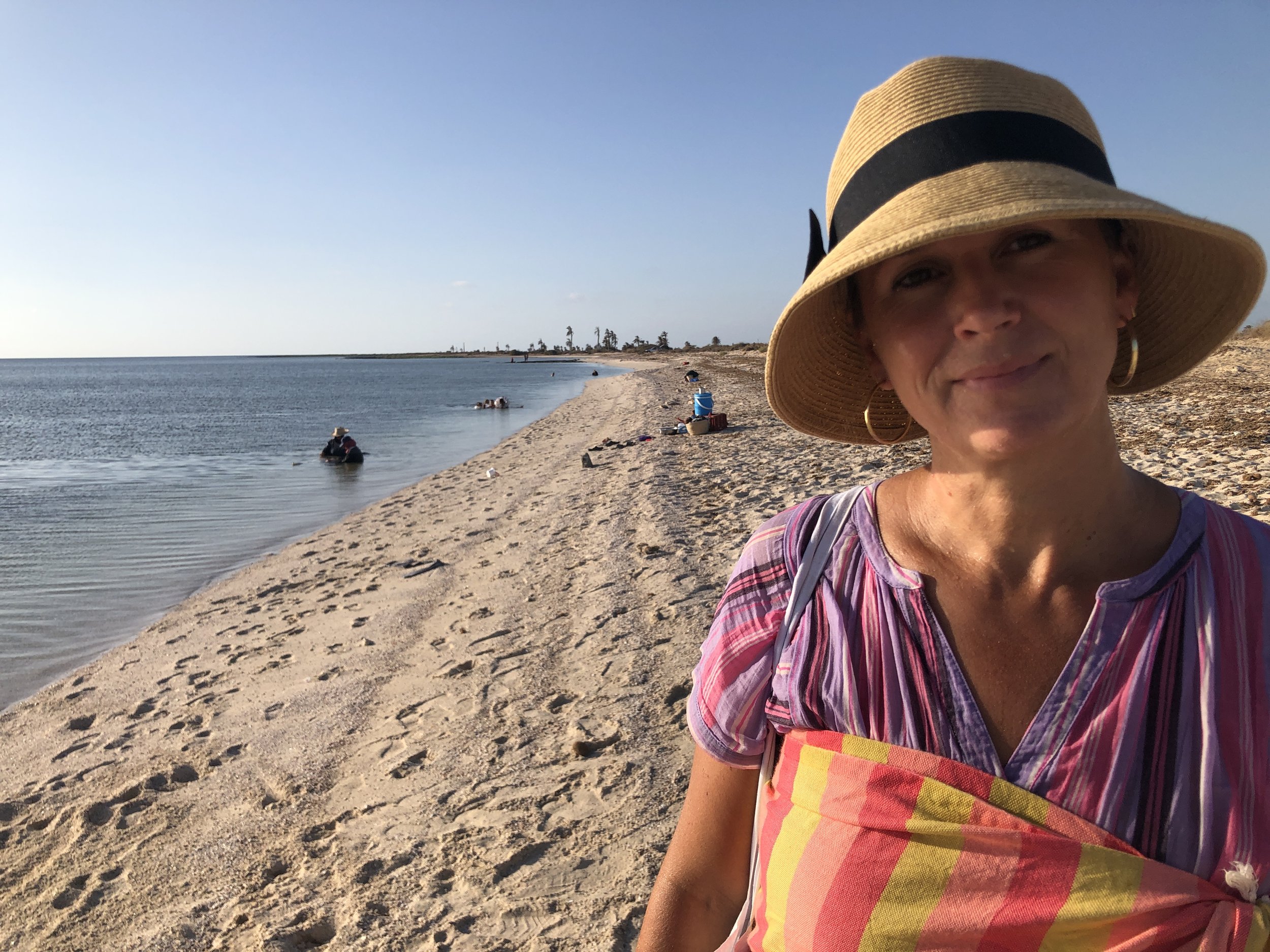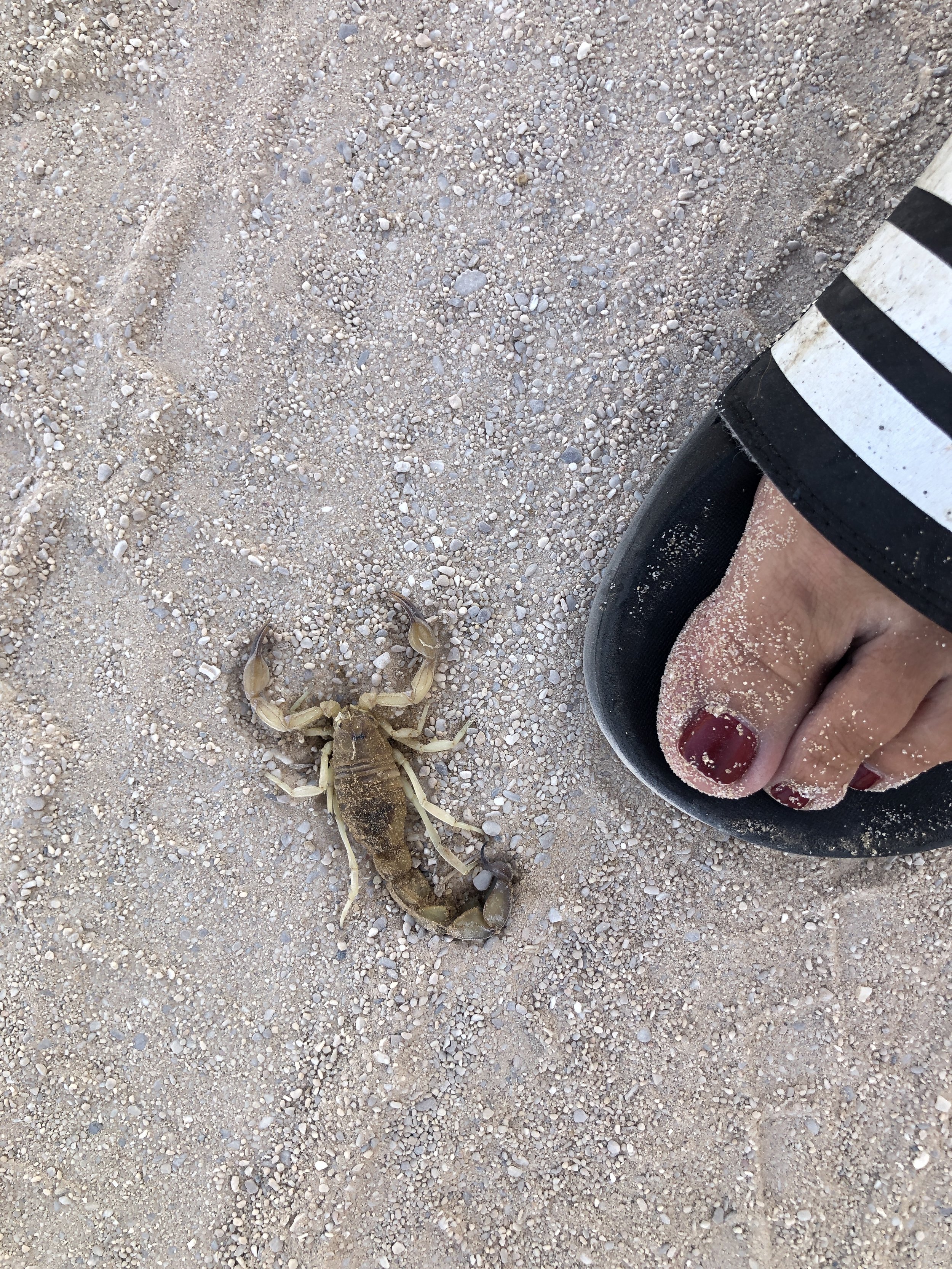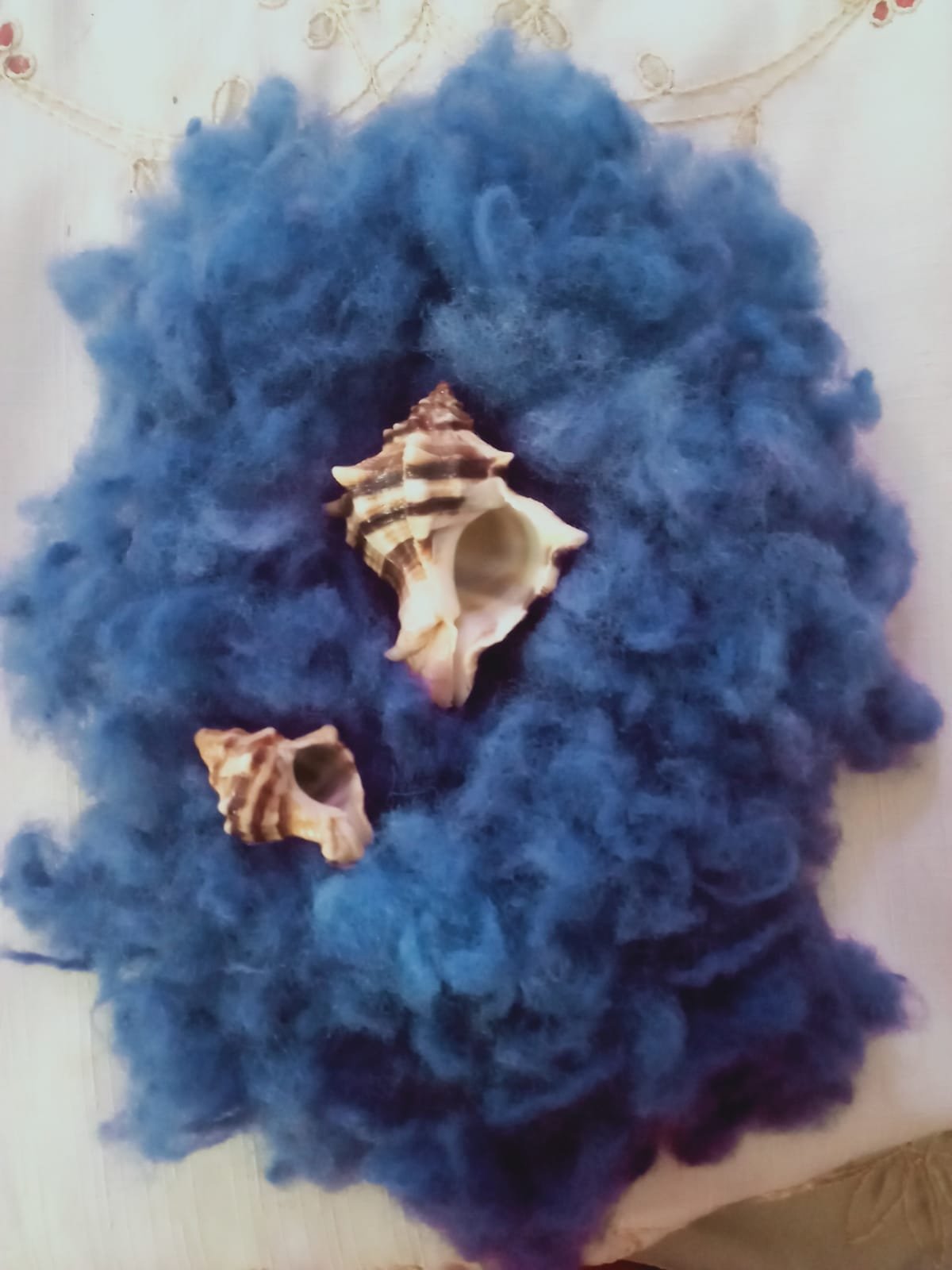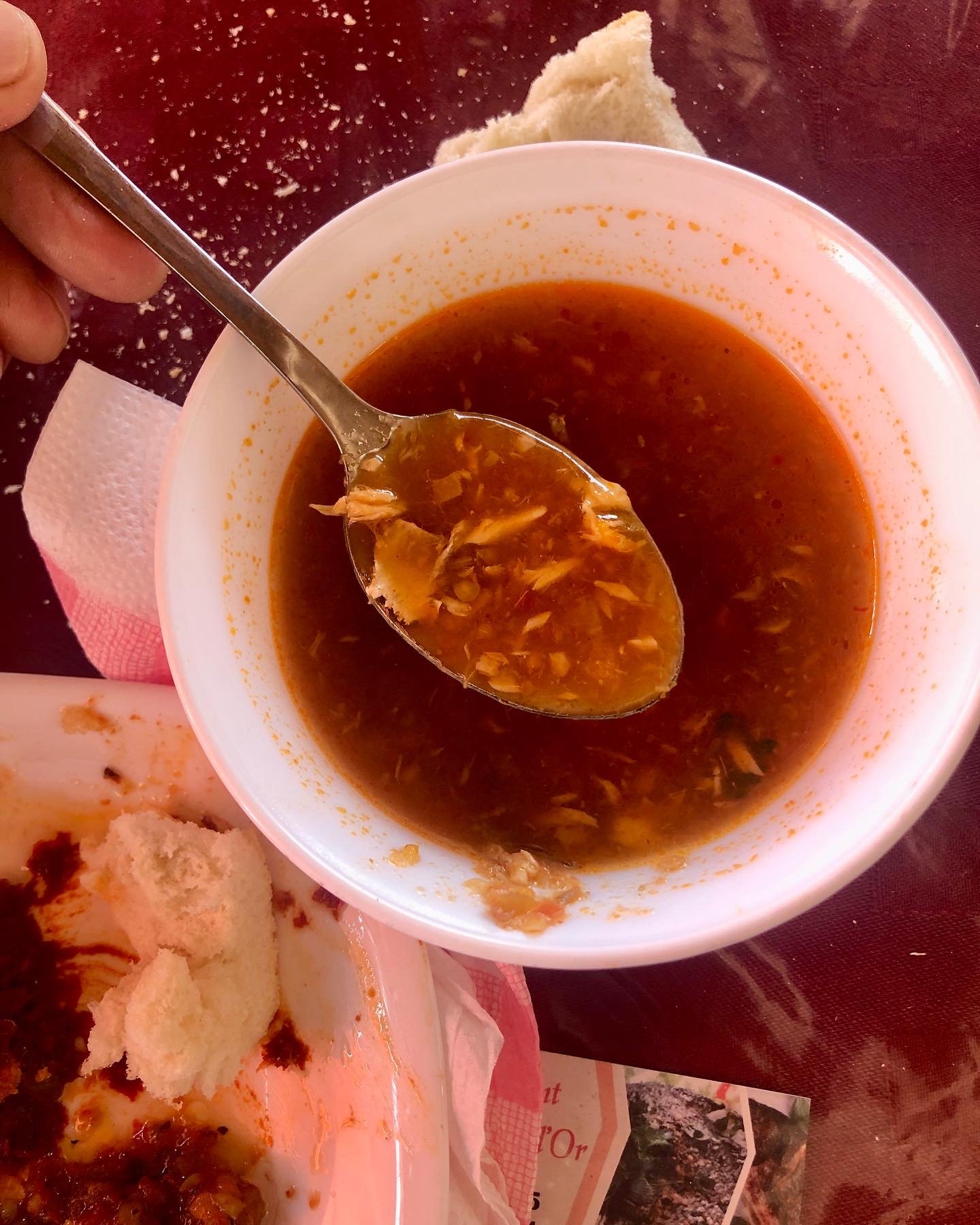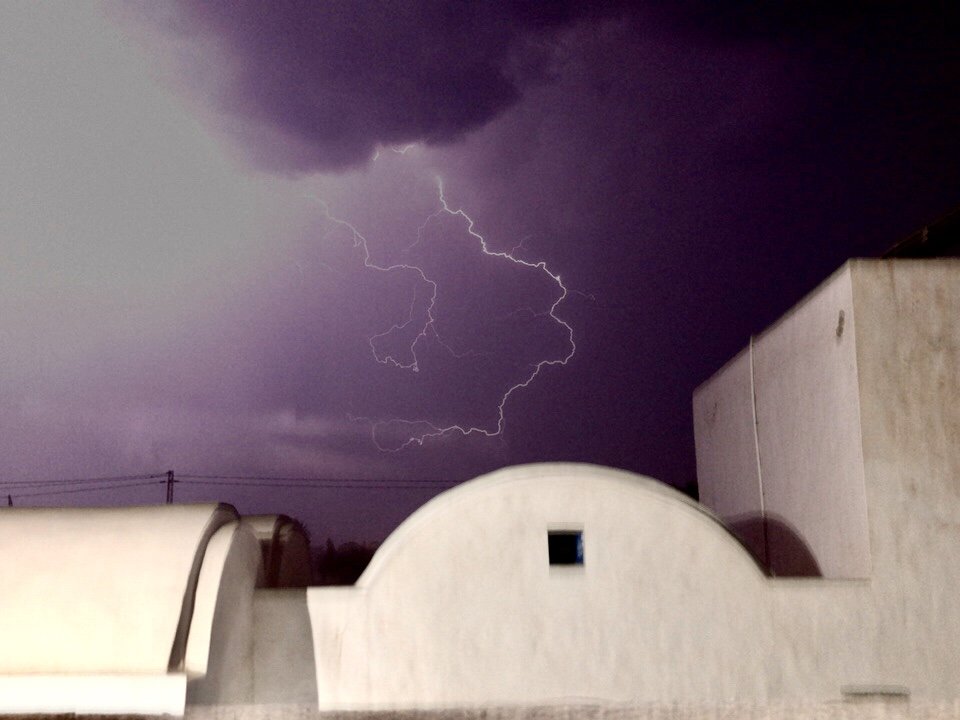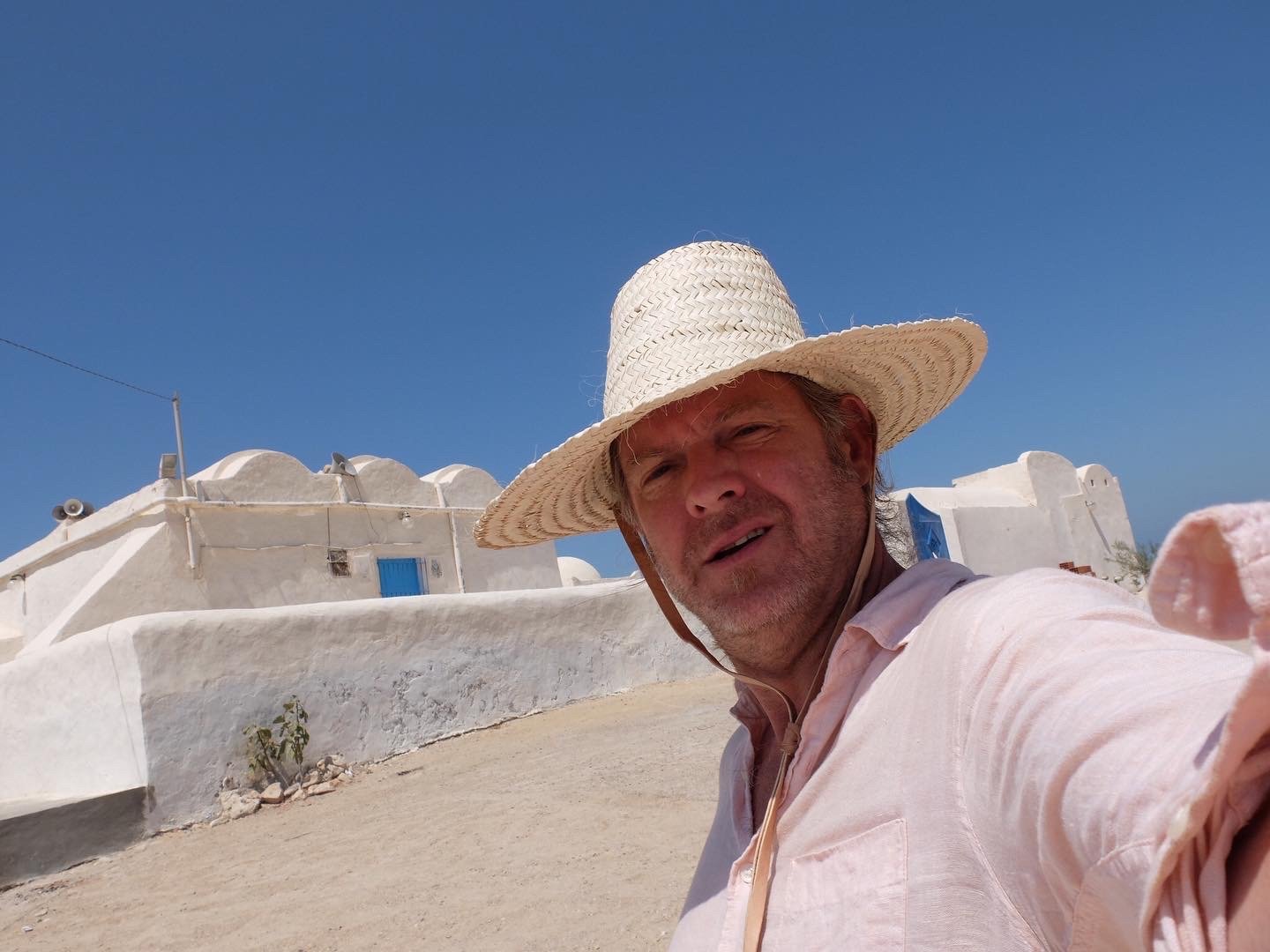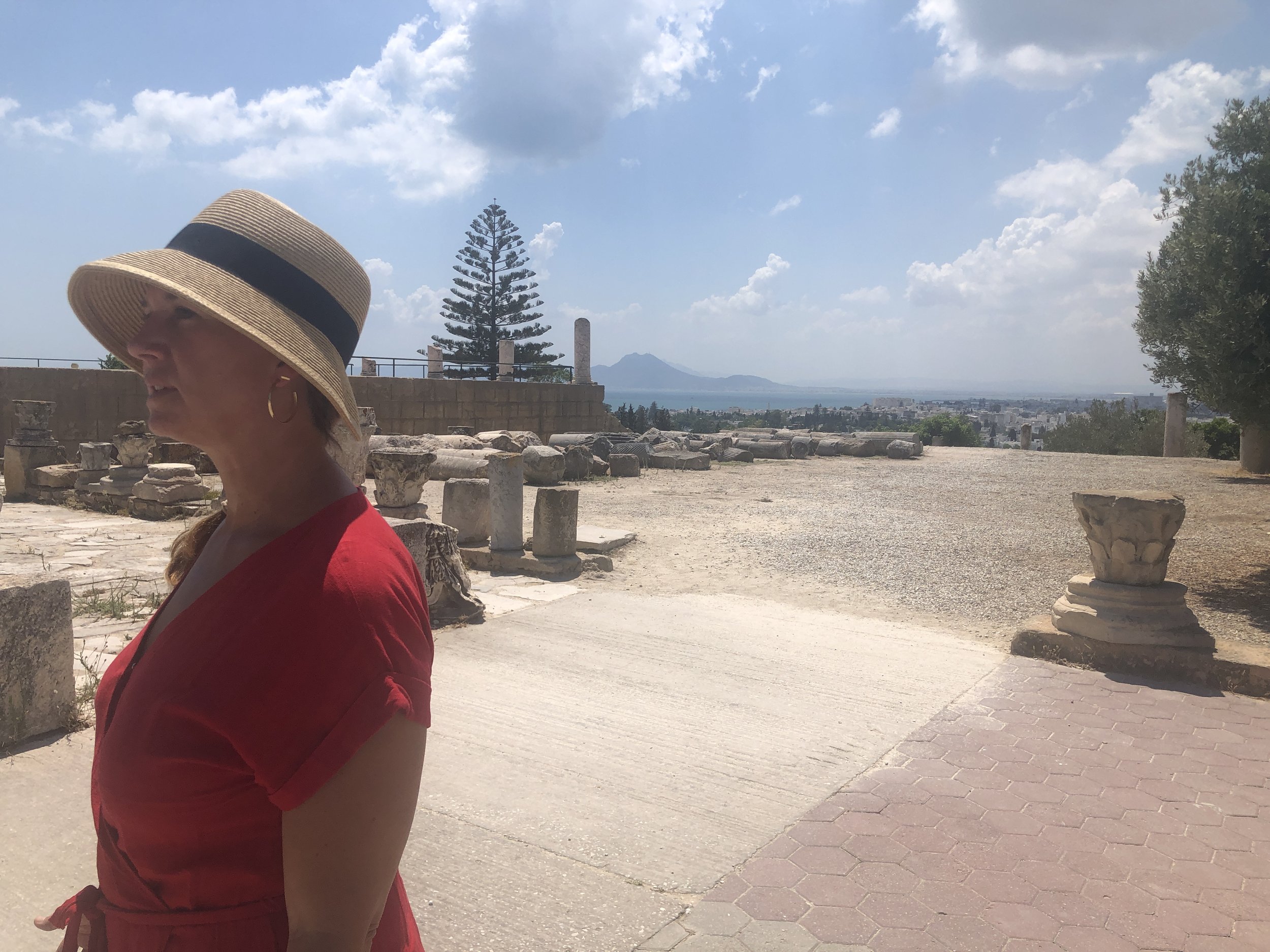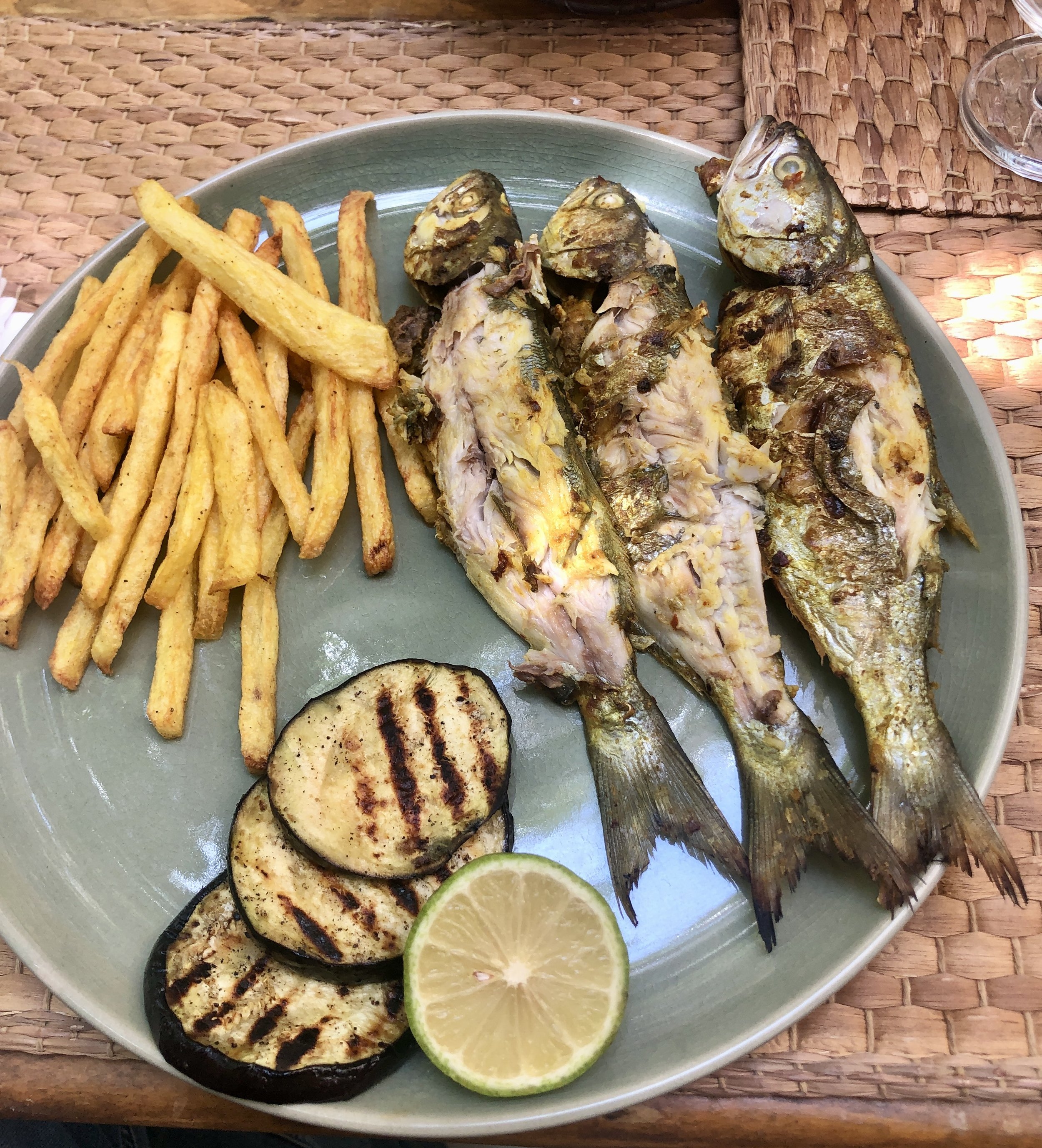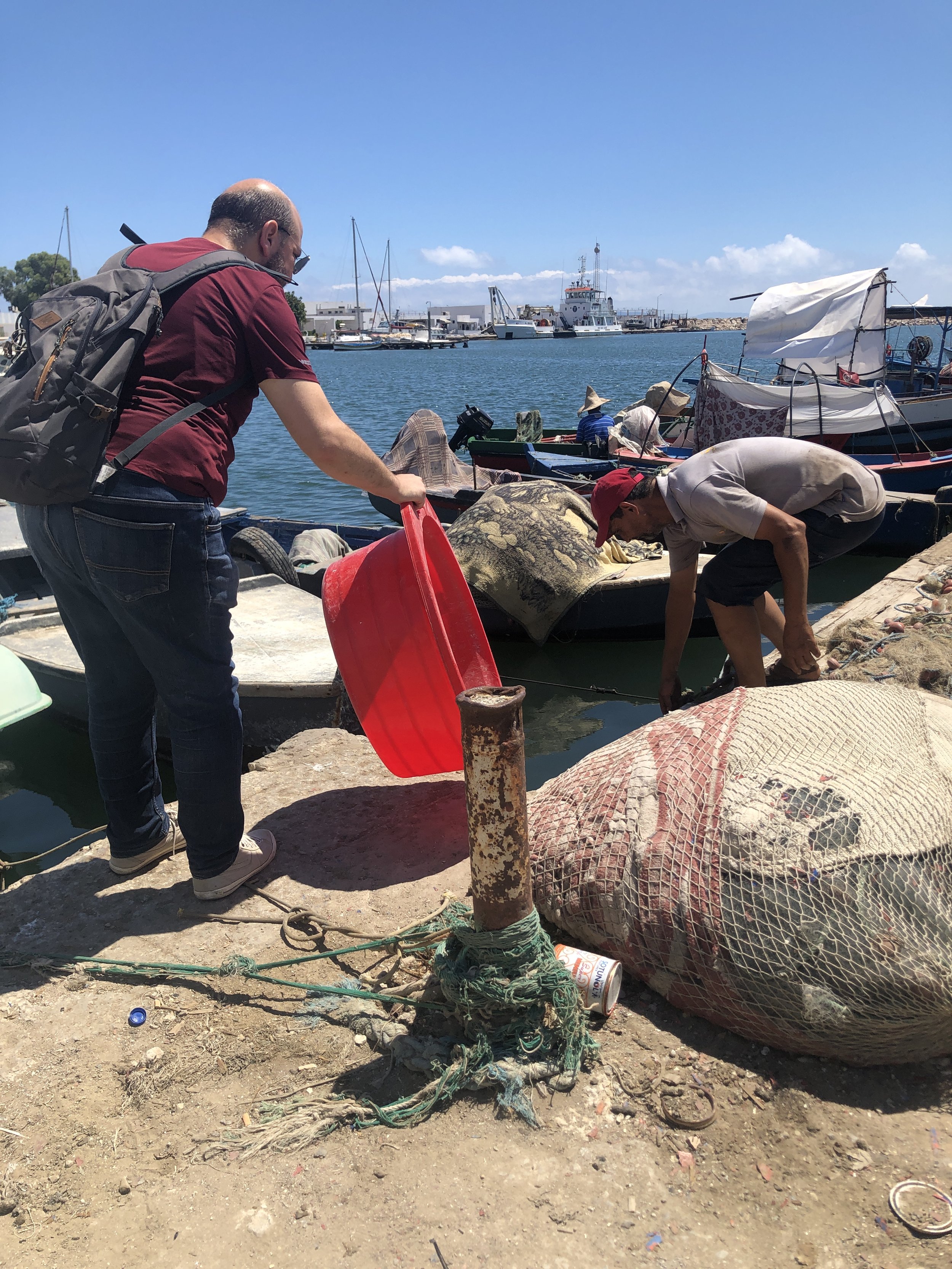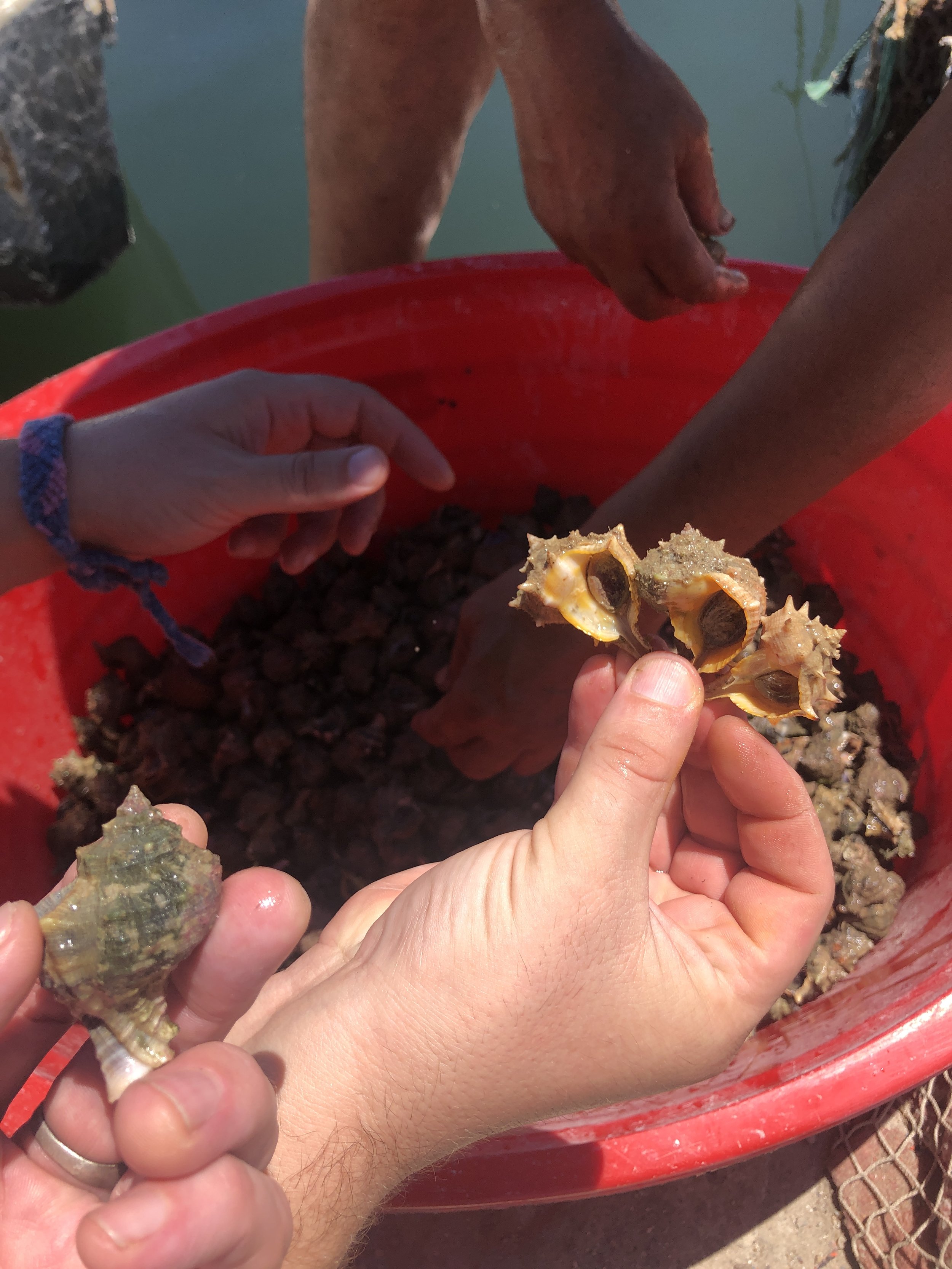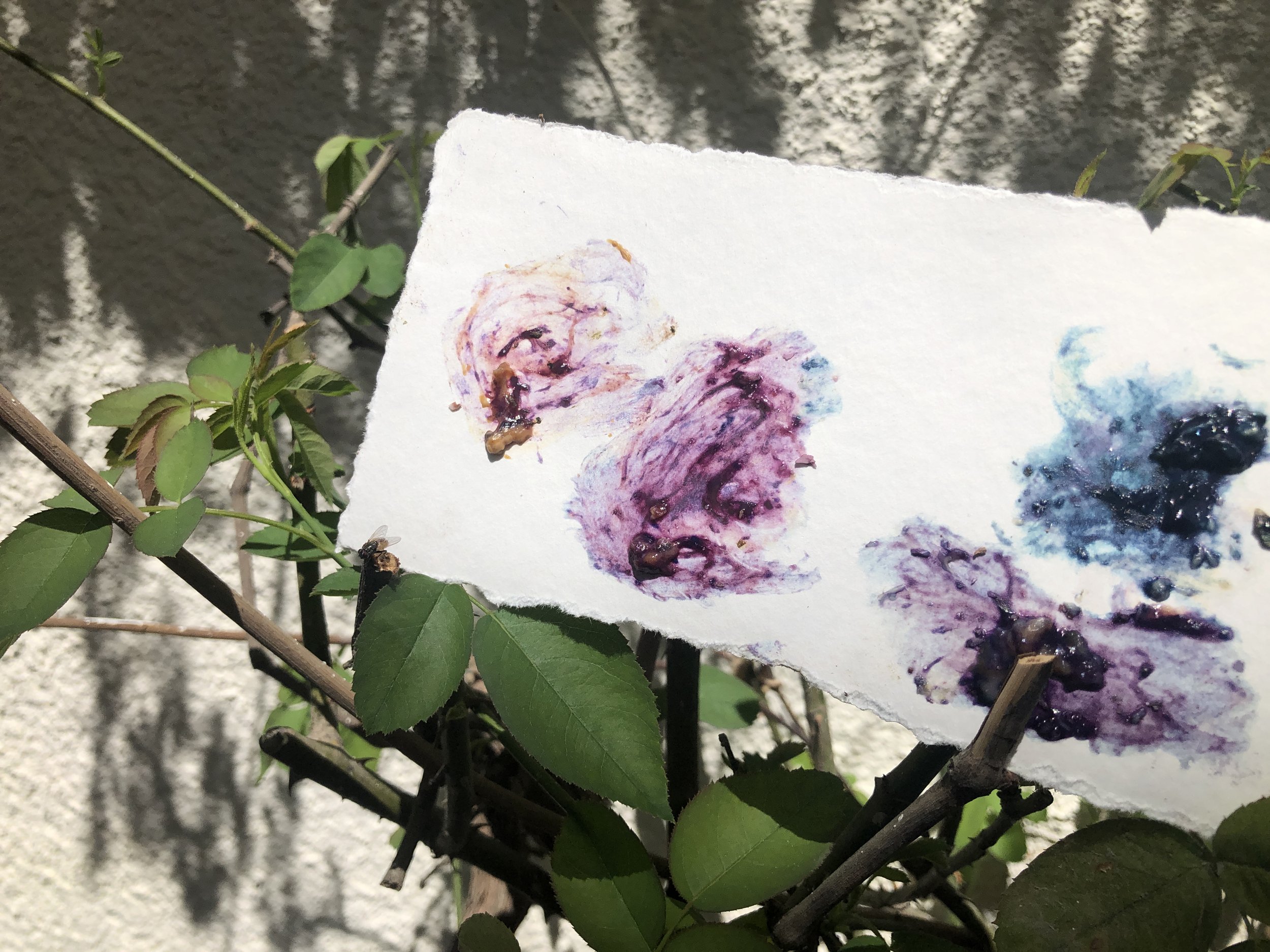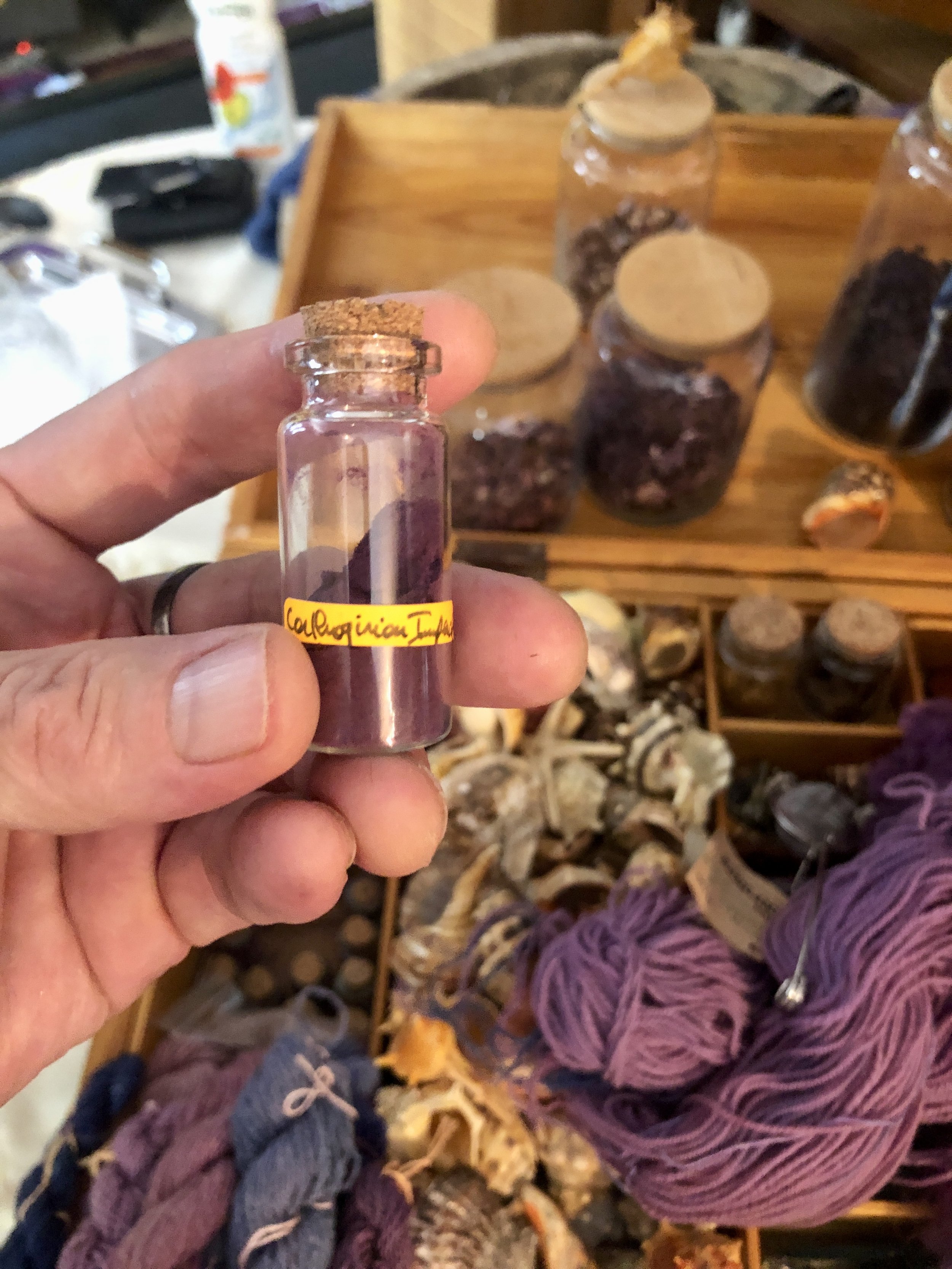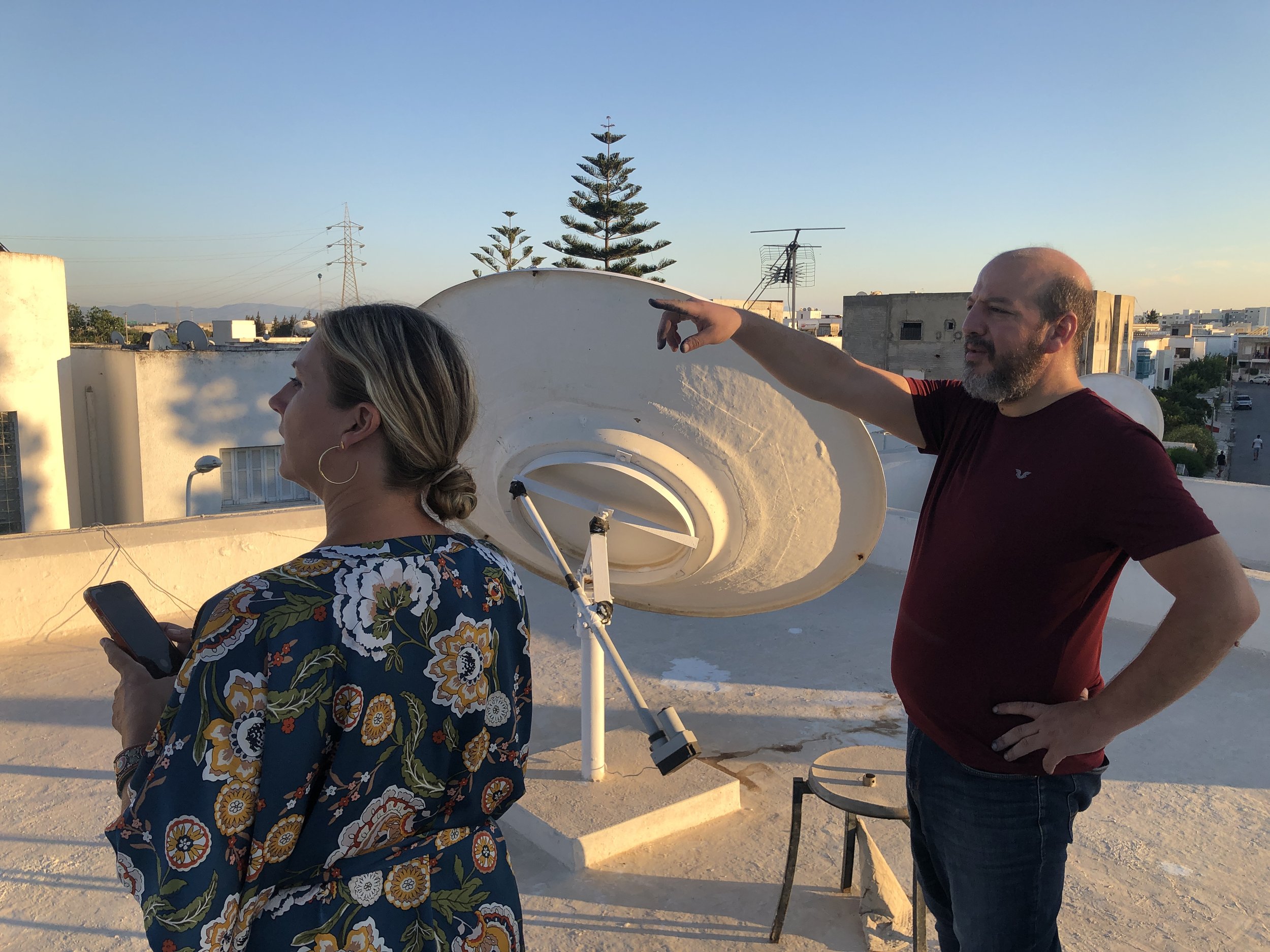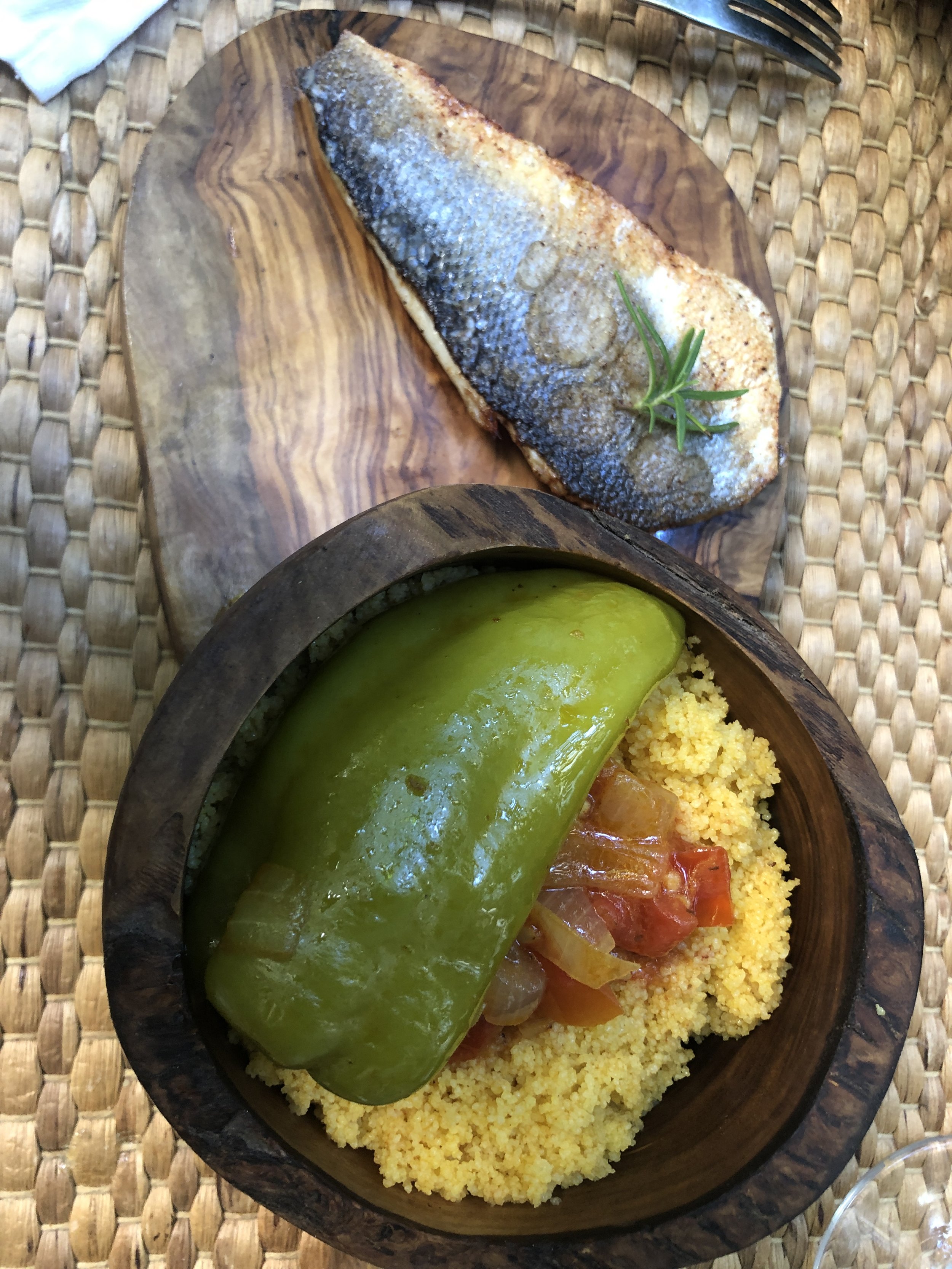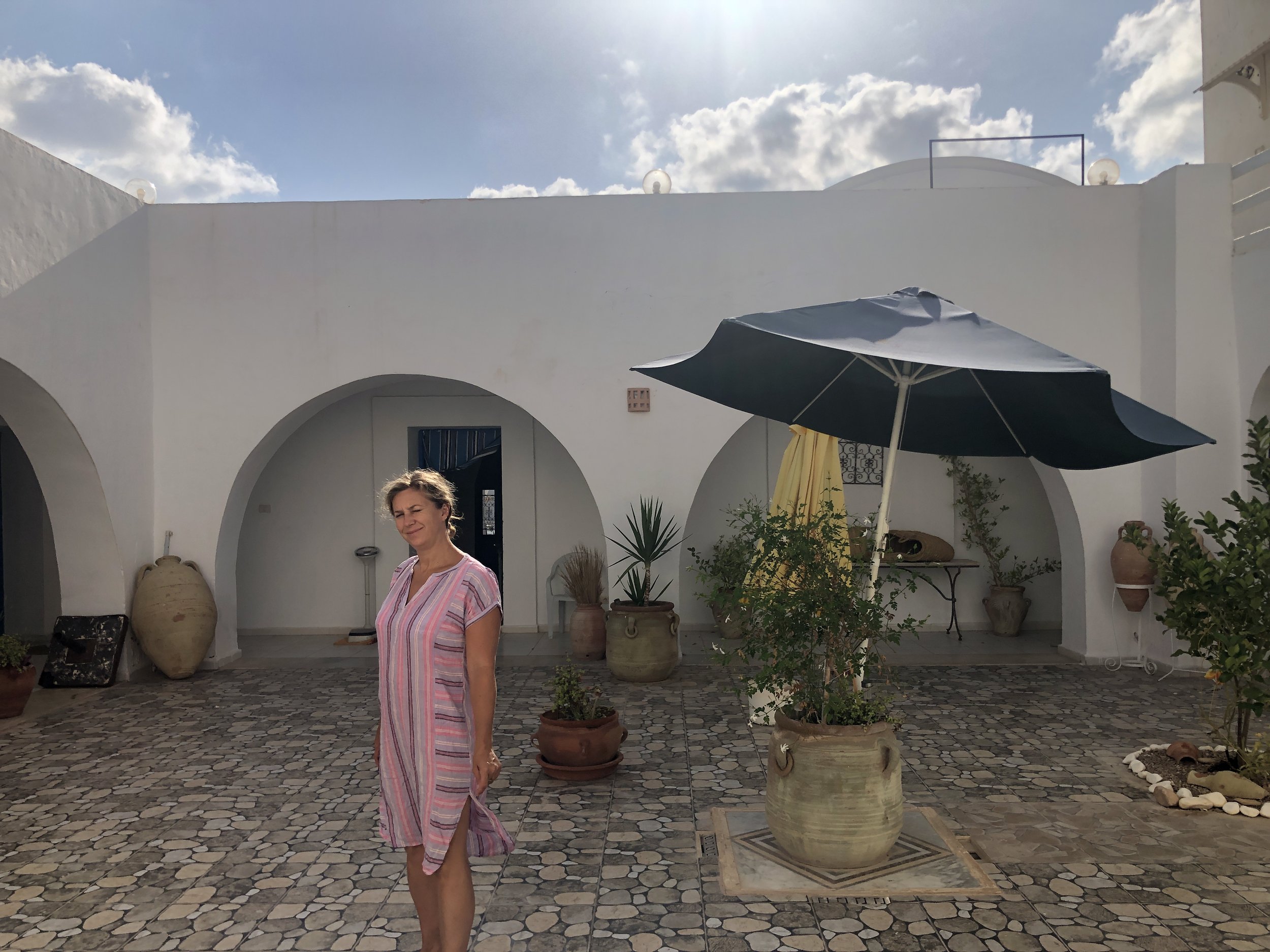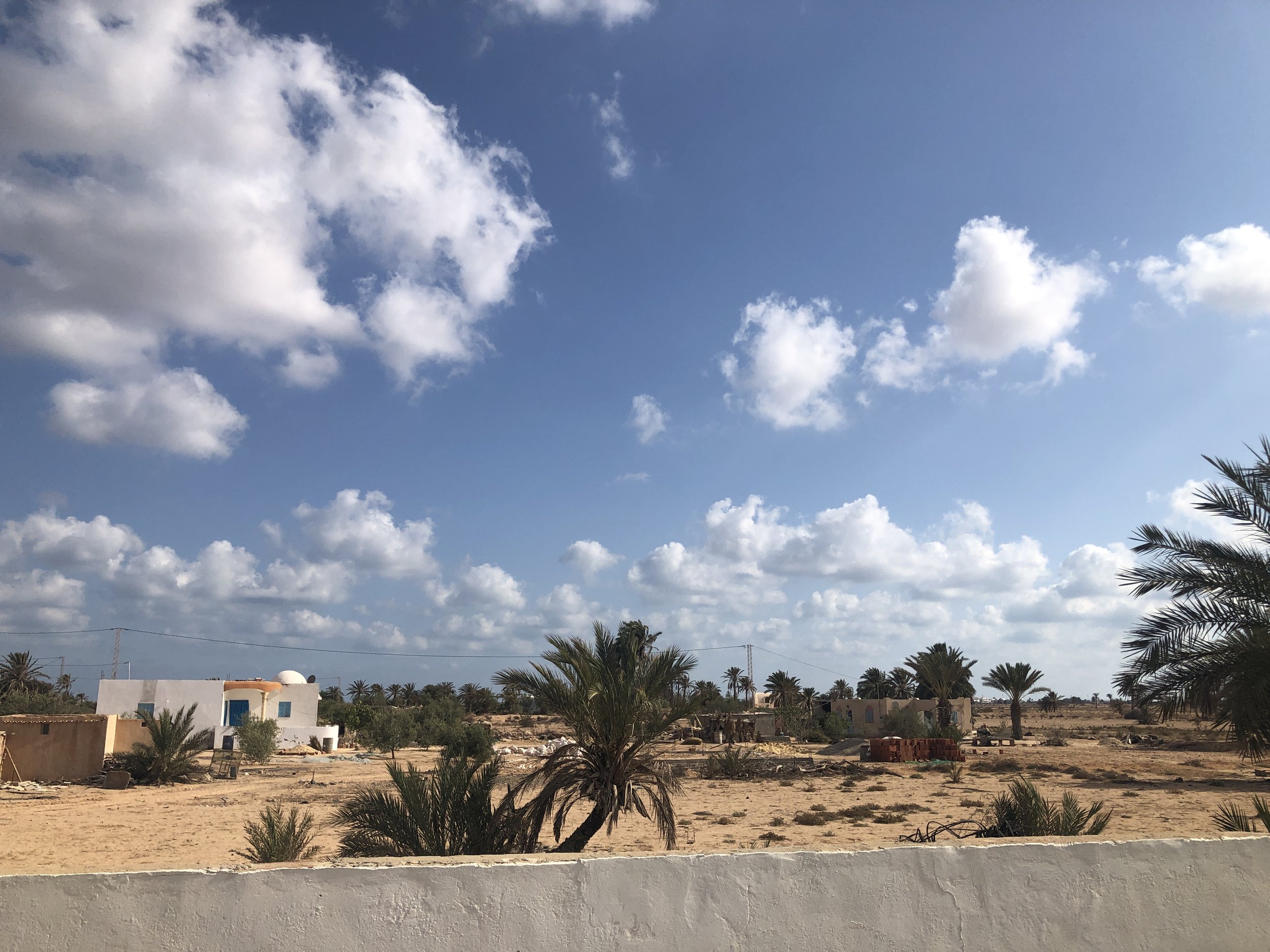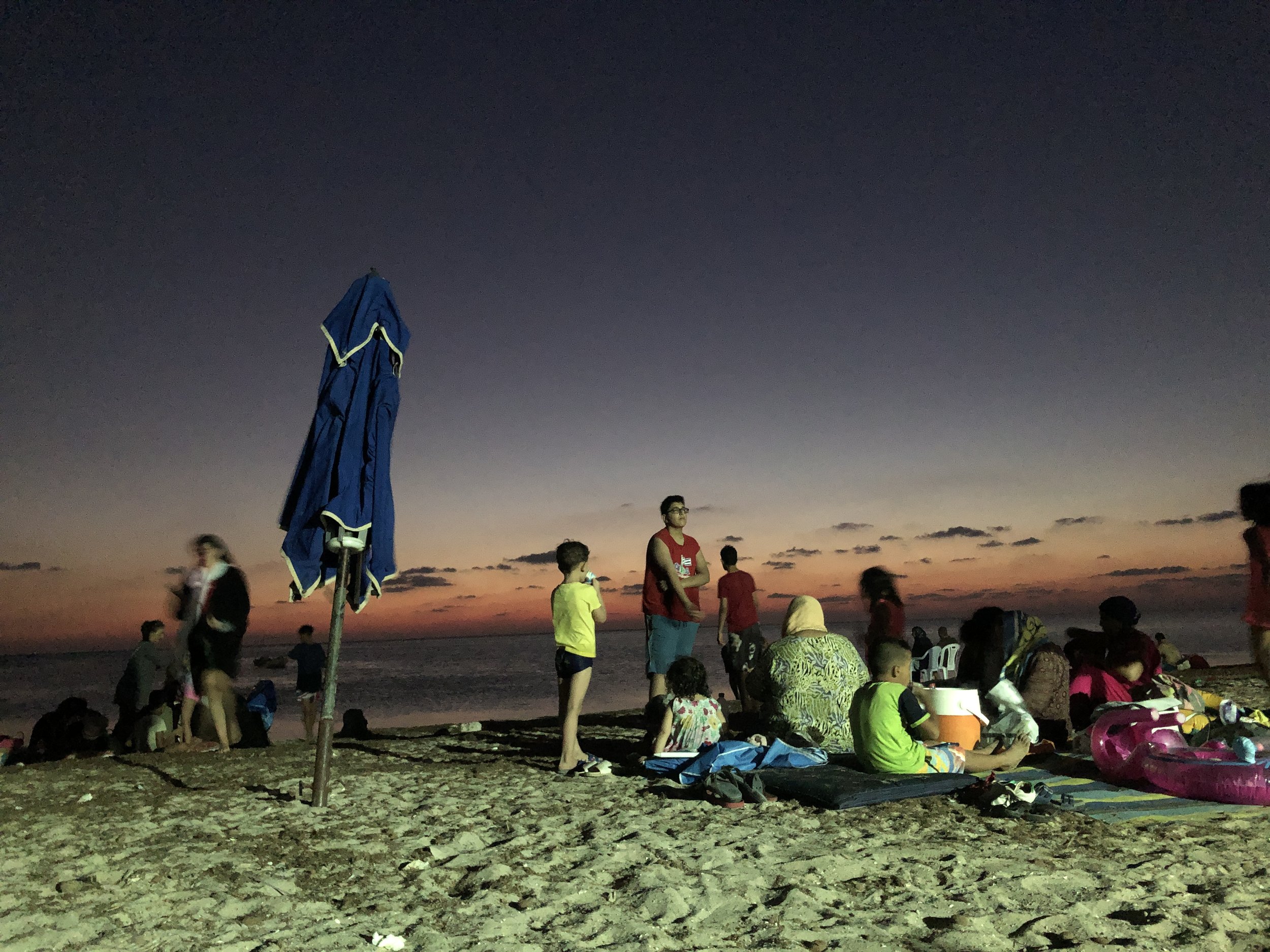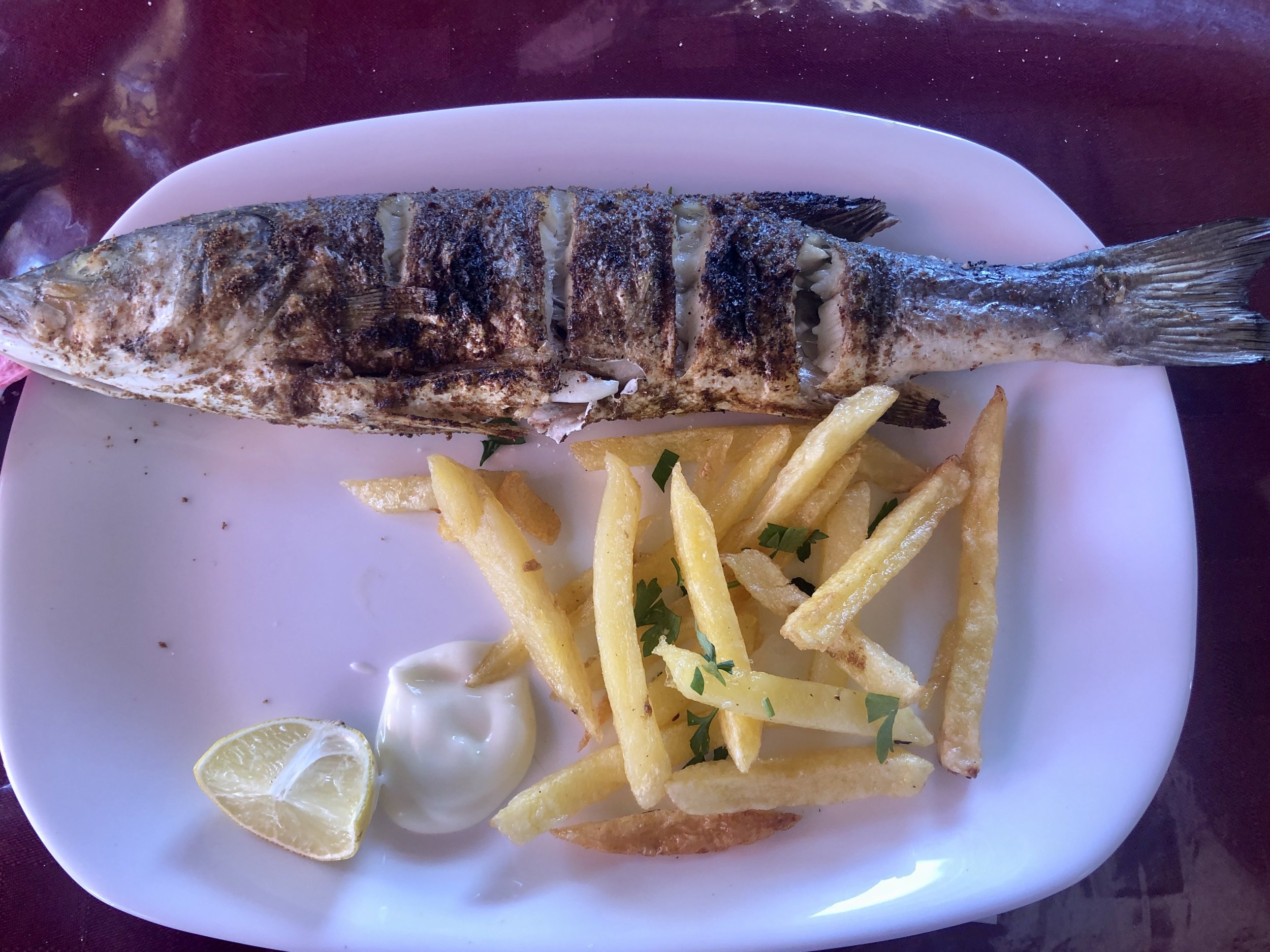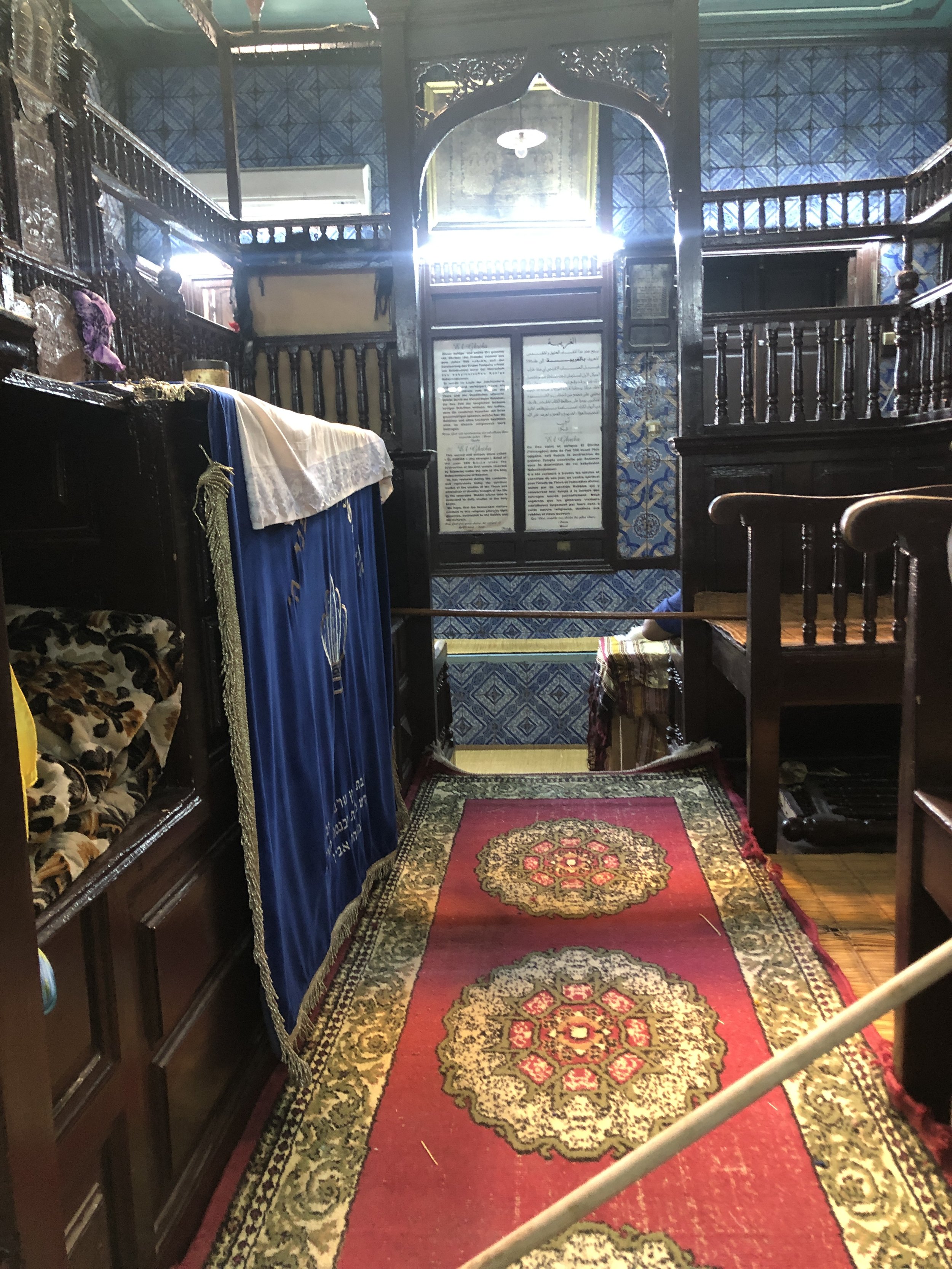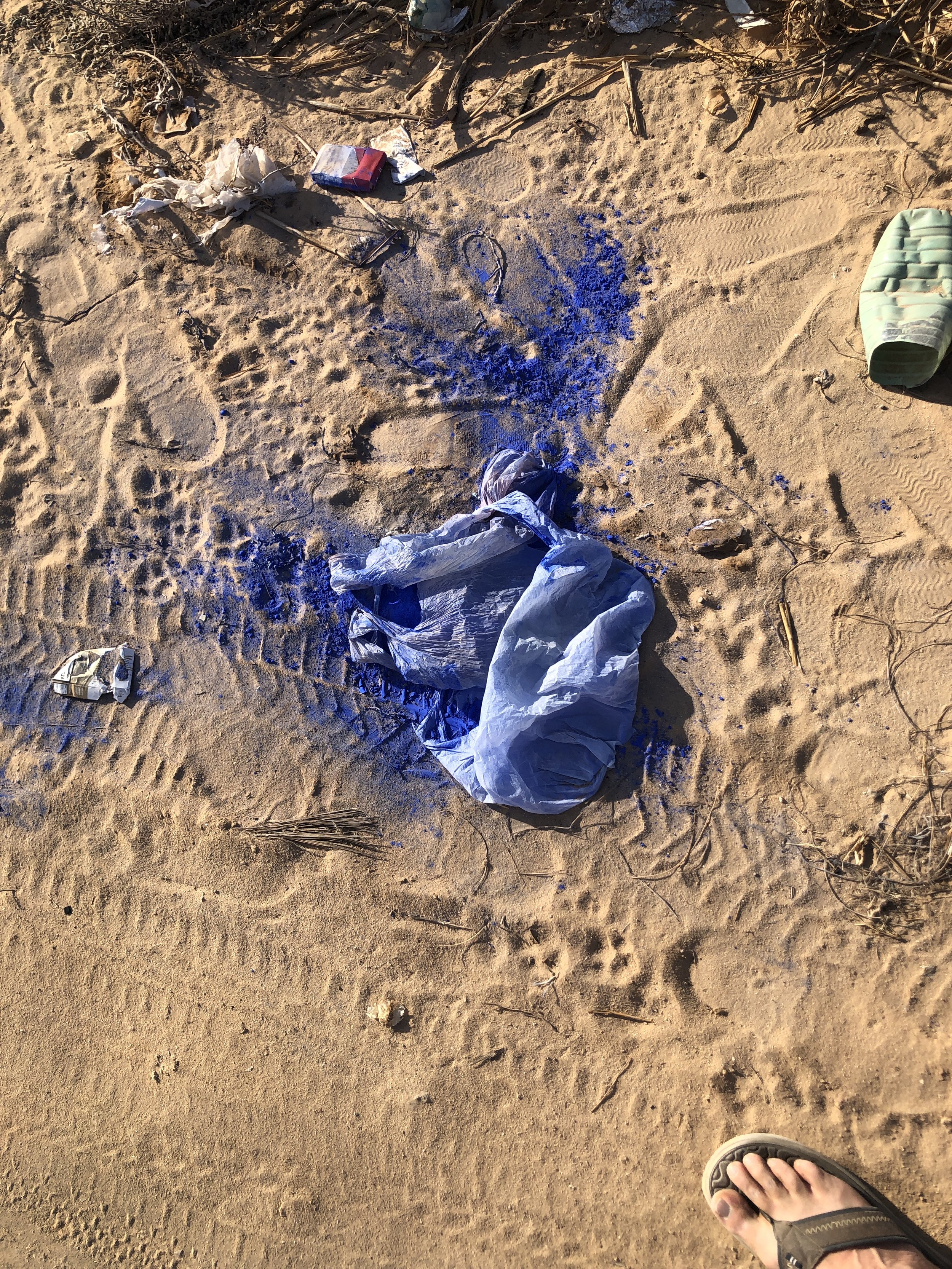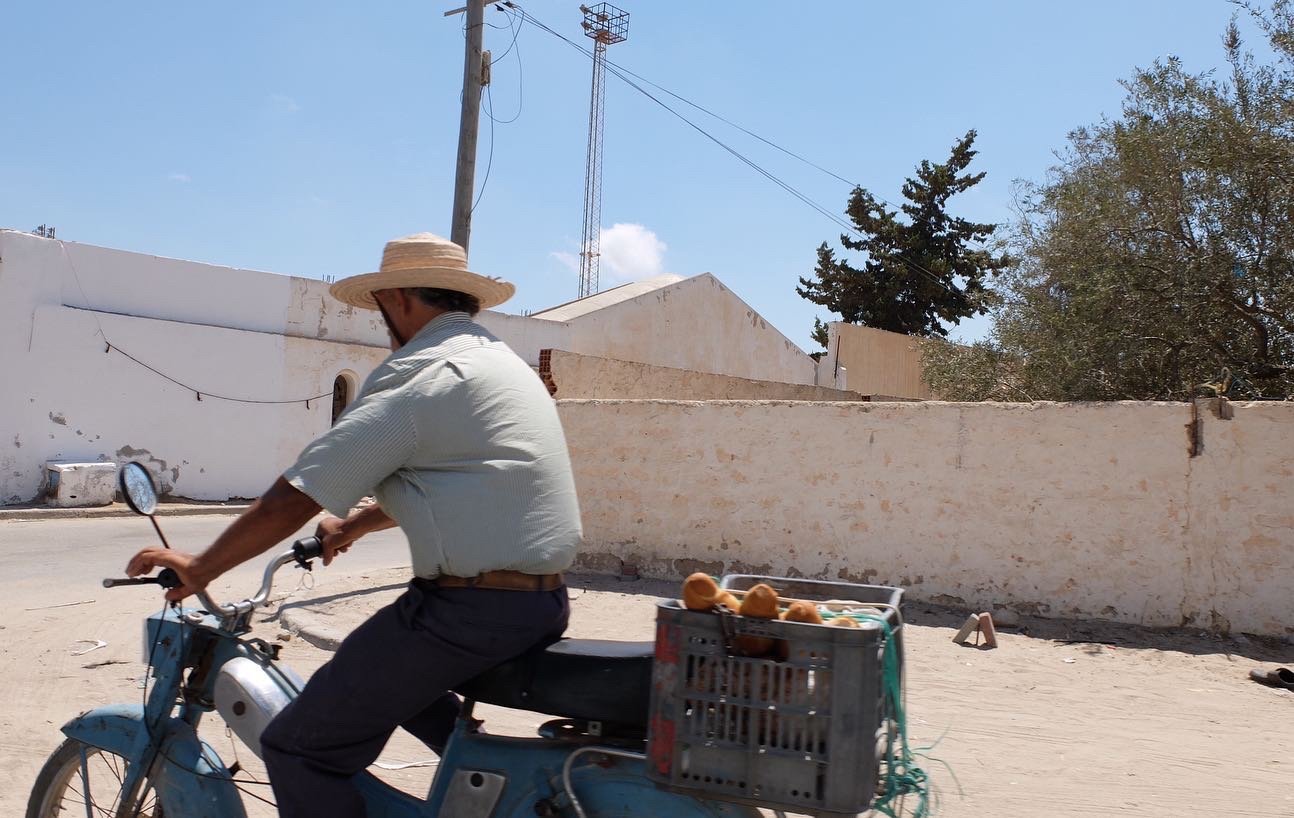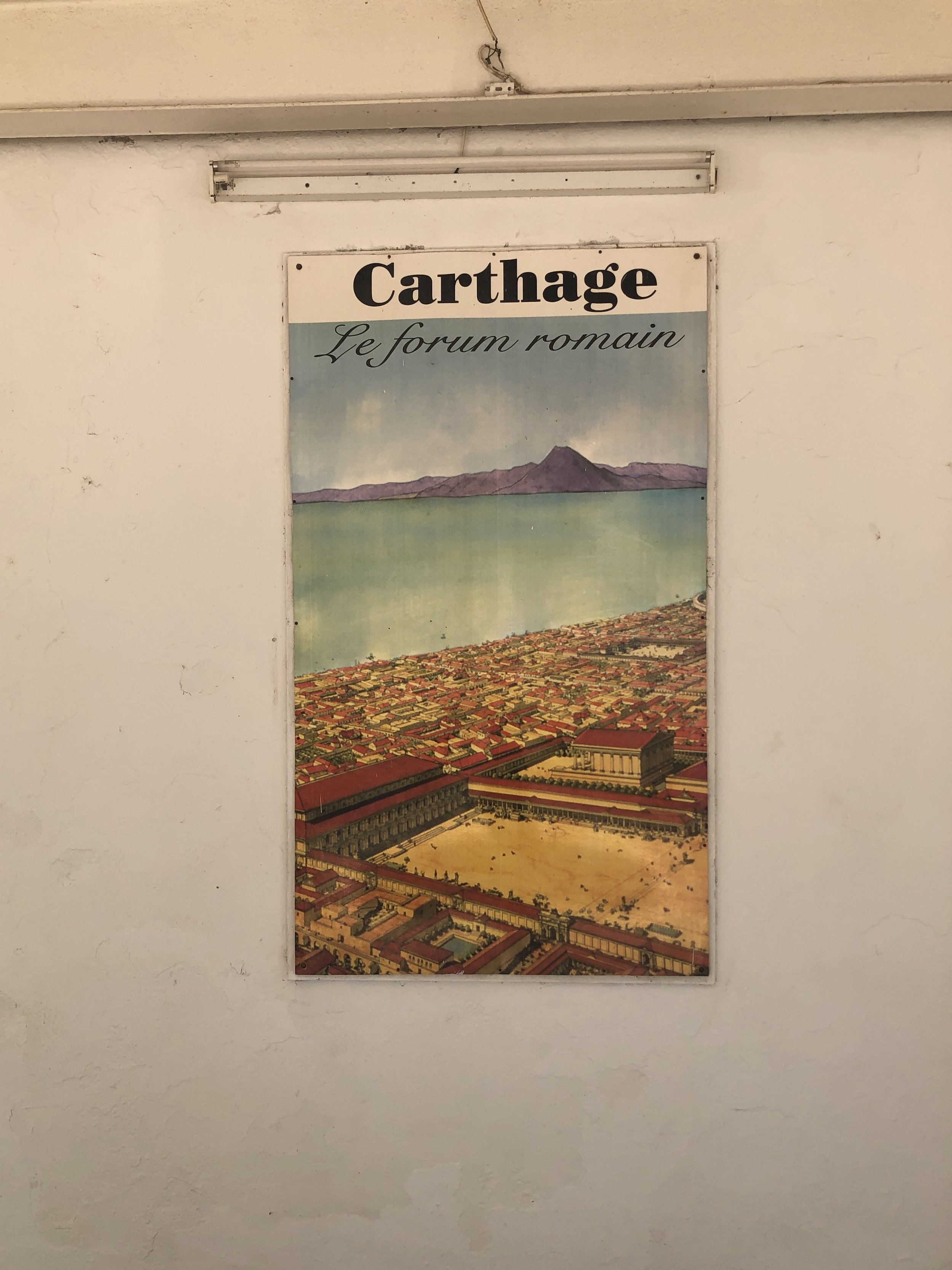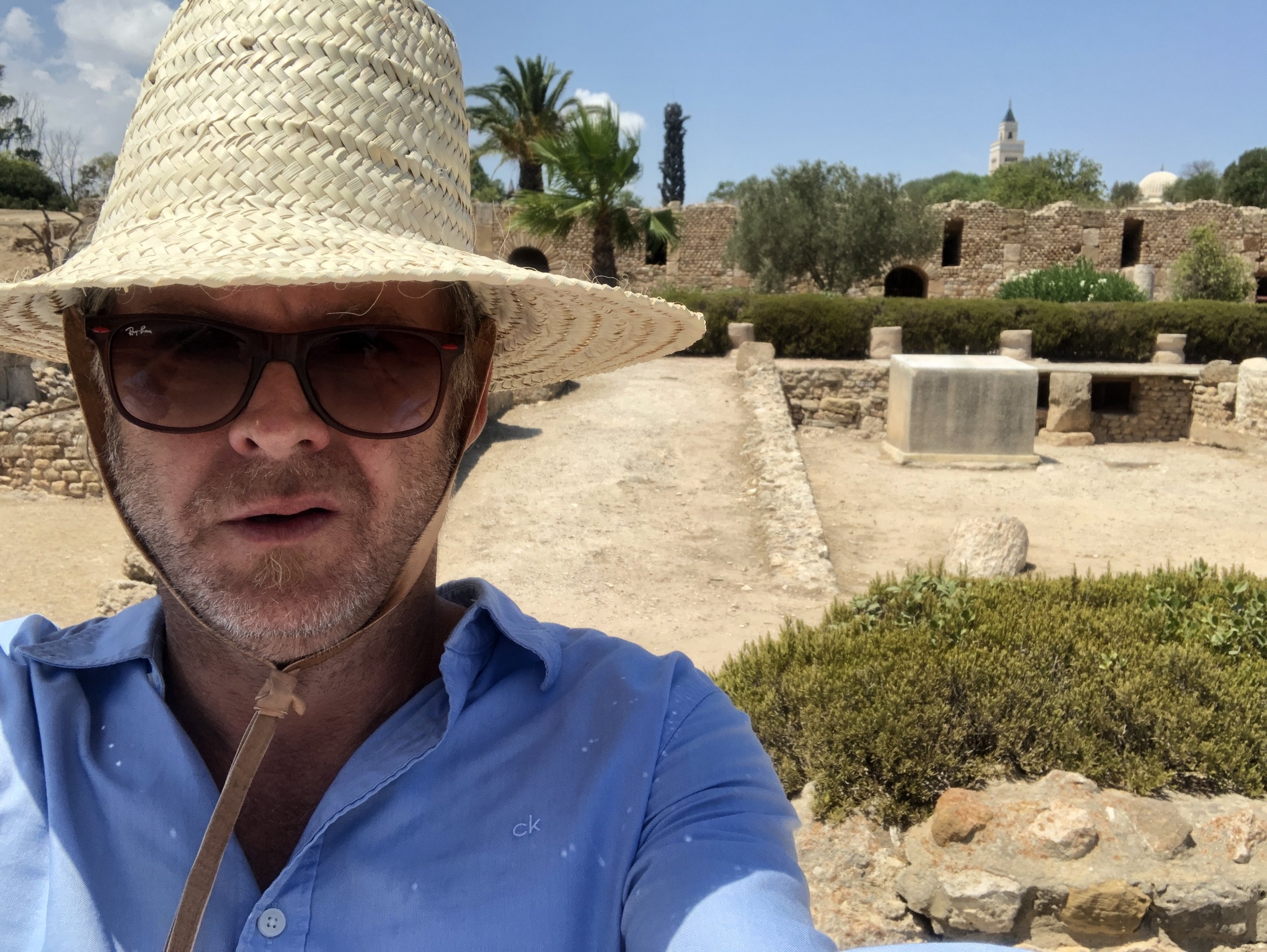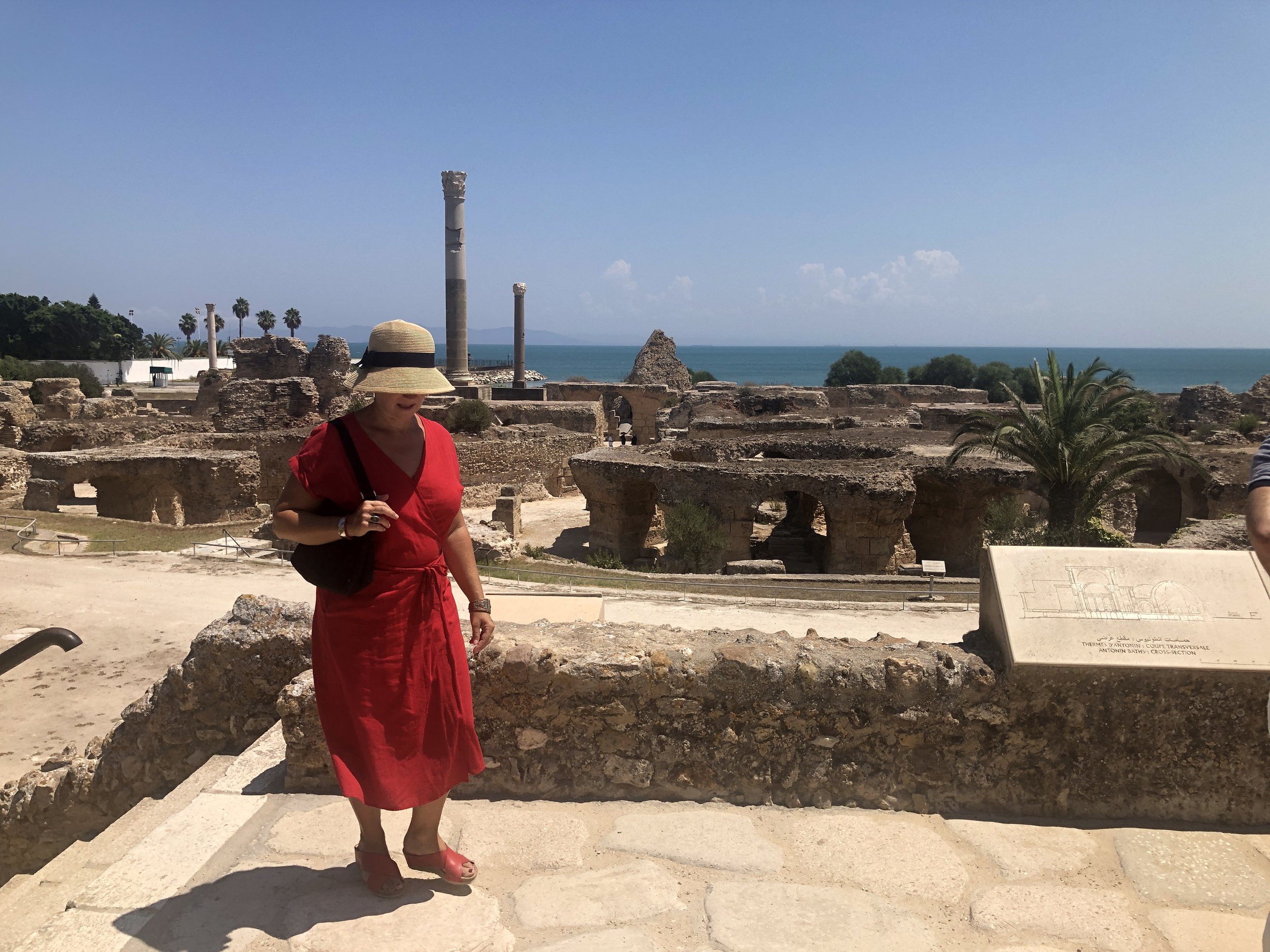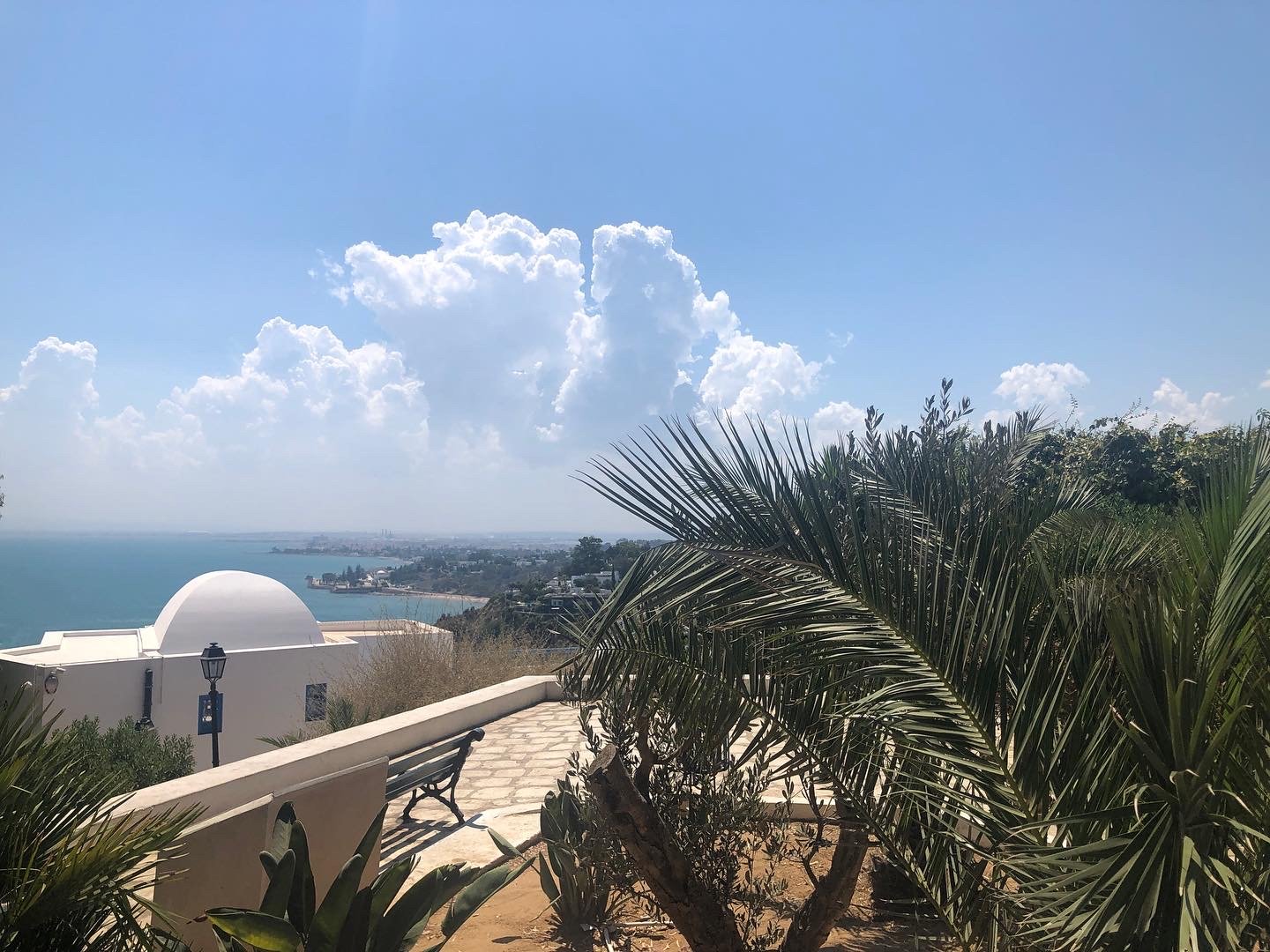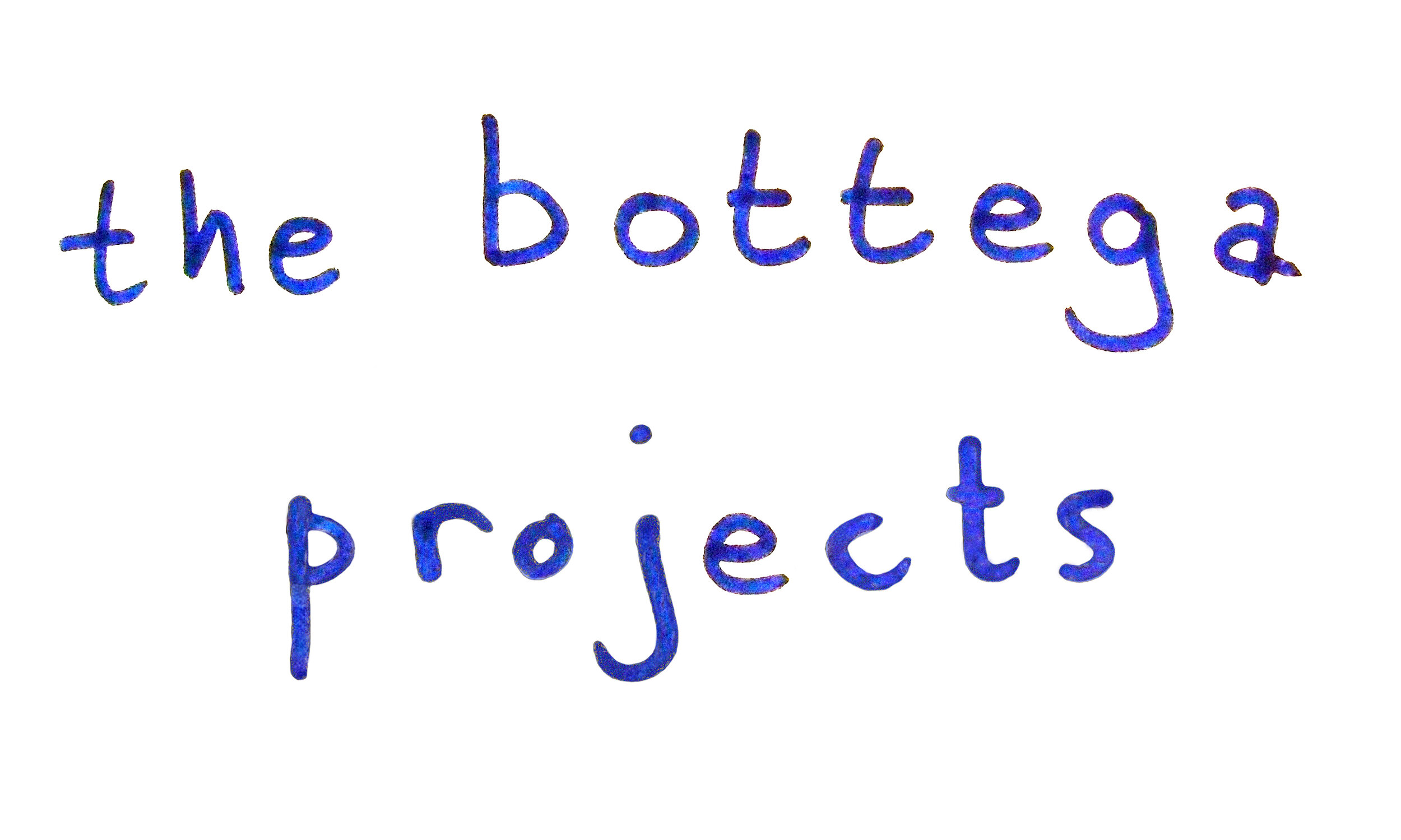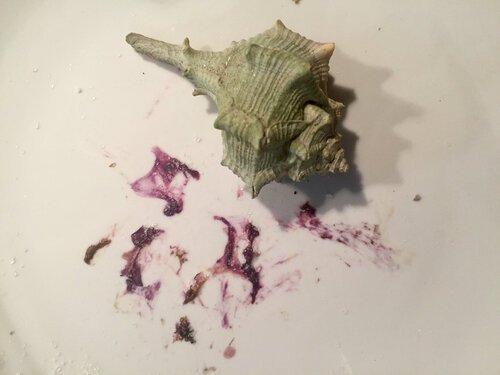Purple/Djerba, Tunisia/ August 2022
Purple, Djerba/Tunisia
August 2022, The Lure of Tyrian Purple
Our color research brought us to Tunis and the Tunisian island of Djerba searching for the origins of the mysterious and valuable dye called Tyrian Purple. This color has been well-known, even for those with only a little art history background; due to its famed value, rarity, and as a subsequent status symbol.
Procured from the small gland of a sea snail, the color is permanent and unique in nature. Much of the fame and hyperbole surrounding the color- that it took 10,000 snails to dye the hem of a garment–are true. Reserved for Roman emperors under the penalty of death, this beginning of sumptuary law began in 215 BCE, when materials of garments, the number of guests, and the consumption of certain foods were limited. The color purple was so exclusively the emperor’s that even those who wore shades of the color or imitation Tyrian purple were severely punished.
The name, Tyrian purple, comes from the city of Tyre, an ancient Phoenician city in contemporary Lebanon. Legend says that the god Heracles was walking on the beach with the nymph Tyros when his dog came across a murex snail and stained its snout with the vibrant purple color. Tyros asked for a dress of the same color and ultimately the city of Tyre was named after her.
Our journey began in modern-day Tunis where the remains of the storied city of Carthage is found. Built by the Phoenicians in the 9th century, the name means “new city” in Punic, replacing Tyre as the capital of trade. As all ships had to pass through the strait between Tunis and Sicily, Carthage commanded most Mediterranean trade. It was one of the largest cities in the Hellenistic period and one of the largest in history, rivaled only by Alexandria in the Roman period. The city was fortified with 37 km/23 mi of massive walls which protected it from attack, especially by sea. Its circular Punic harbors which are still visible today, held 220 of its naval warships.
The Phoenicians were a Mediterranean trading empire and seafaring people who emerged around 3000 BCE and came to prominence around 1200 BCE. They originated from what is today called the Middle East and inhabited a multitude of places that included many cultures. Phoenicians were named by the Greeks and the Greek exonym φοῖνιξ phoînix, had multiple related meanings: Phoenician person, Tyrian purple, crimson or date palm. Homer used all of these descriptors and it is not difficult to see how the name of a color and of a people could be interchangeable; such was the importance of the production and trade of this valuable resource.
With Carthage as their main trading center, the Phoenicians competed only with the Romans for resources and capital. The two cultures battled for control of Mediterranean trade, resulting in The Punic Wars between 264-146 BCE. The Romans inevitably gained dominance with the city ordered to be utterly destroyed by the Roman Emperor Scipio Africanus causing the downfall of Phoenician reign. Although not true, lore says that Carthage was ‘salted’ by the Romans so that nothing could ever grow again. After about 100 years of its obliteration, Julius Caesar ordered Carthage to be rebuilt in 45 BCE as a Roman city and it prospered once again. Despite being more than 2000 years ago, the viciousness of the city’s destruction is still in the hearts of some present-day Tunisians.
To visit the archaeological sites of Carthage today is to visit a ruin upon a ruin. They are spread across a large expanse which requires a car to see them all. Remnants of basilicas, sculptures, pieces of columns, and building foundations barely speak to the original splendor of Roman Carthage. One of the three largest in the Roman empire, the public baths are one of the most impressive archeological sites at Carthage. Standing upon Roman rubble on top of Phoenician foundations, you overlook the Mediterranean, where it is still possible to see the circular Punic harbor with boats coming and going laden with goods.
The Island of Djerba
From Tunis we traveled to the island of Djerba, about 402 km/250 mi south which took us 2 1/2 hours by plane. The island is now primarily known as a beach vacation destination, but we went to find an original production site for Tyrian Purple at the archaeological site of the ancient city of Meninx.
As if simultaneously in the past and the present, there are 5-star beach hotels with scooters and Mercedes zipping by on the northeast coast while the rest of the island follows the timeworn tide of fishing and the limited agriculture the desert climate provides. Besides fish and eggs on the menu, there were also a thousand and one watermelons for sale along every road. Outside of the tourist zone, time slows down and is determined by the sun and sea. The menzels– the specific architectural Djerbian family compounds– are separated by dirt roads, spiny vegetation, and the occasional camel resting in whatever shade it can find. The landscape is sparse and the culture of Djerba is unique from mainland Tunisia.
Djerba has a long history of multiculturalism and tolerance; historically a hub for trade as well as a haven for those seeking respite from persecution. A mixed culture of Muslim, Christian, and until the modern flight to Israel, a robust Jewish population, is still evident in Houmt Souk where three sites of worship neighbor each other peacefully. We visited the Catholic Church of Saint Joseph’s, just a stone’s throw from the central Mosque of the Turks, and the nearby Slat Pariente synagogue. All are separated and united by the market as further evidence that trade is a factor that overcomes religious difference.
While Tyrian purple was a symbol of power in the Roman mind, religious cultures like Christianity and Judaism associate it and its blue variant with transcendence and with devotion. The color’s rarity also became equal to holiness. In Hebrew, the blue color called tekhelet derives from the snail hexaplex trunculus and was reserved for dyeing stripes on the Tallit prayer shawl and its fringes.
In the center of the island is the legendary Synagogue of El Ghriba, by some accounts the oldest synagogue in Africa, certainly the oldest in Tunisia. It is said to be built with a stone taken from Solomon’s temple of Jerusalem after its destruction in 586 BCE. Rebuilt and amended over time to accommodate growing tourism and an annual pilgrimage, its architecture also symbolically reflects Judaism’s history, such as a missing column that reminds one of the destruction of the Temple of Jerusalem. It is said that the building will never be completed as nothing is perfect except for the Divinity.
The Ancient City Meninx
We met our knowledgeable guide Marwen of The Meninx Archeological Project (MAP) in Houmt Souk and drove south to the archaeological site of Meninx, where MAP conducts research and excavations with the University of Munich and the Institut National du Patrimoine de Tunis. Although stalled by Covid, plans continue for a visitor center and further excavations.
According to Pliny the Elder one of the best purple dyes was produced on the island of Djerba in the ancient city of Meninx. It is located on the southeastern coast near the current town of El Kantara. Founded in the 4th century BCE by the Phoenicians, it grew in size and importance under Roman control until it was abandoned in the 7th century CE. Like other Tyrian purple production centers, it has a naturally protected harbor which favors murex production. There is not much to see upon arriving at Meninx as some parts of the city are now under water and what has been excavated has been covered with earth for preservation.
While overlooking the sea, a few giant marble capitals and beautifully carved fragments of cornices show the lost beauty of Meninx. Marwen led us through the site and pointed out the basilica, theater, and agora, as well as dye vats and shell dumps. Thousands of ancient murex shells were littered throughout the area that had been the production site and one can still find an intact shell that shows where the gland was carefully removed.
Tyrian Purple
While our search for Tyrian purple brought us to the ancient archaeological sites of Carthage and Meninx, it was our meeting with the Tyrian purple expert Mohammed Ghassen in modern-day Tunis that quenched our colorful thirst.
Ghassen’s passion to rediscover and re-celebrate Tyrian purple coincidentally began as he stumbled upon a broken murex walking on Tunis’ La Marsa beach, just as the god Heracles did so long ago. A professional computer engineer during the day, he has become a self-trained art historian and alchemist in order to fully understand the complex recipe of Tyrian purple. A patriotic Tunisian and a contemporary Phoenician, he sees his quest to reinvigorate the lost art of making Tyrian purple a personal and national calling. Over the last fifteen years, Ghassen has researched and perfected the murex dye extraction to create pigments that he shares, along with his knowledge, with scientists, historians, and artists throughout the world.
One of the few, if not only Tyrian purple makers, Ghassen is generous and humble, and very respected for his knowledge. He offered to pick us up and we spent the whole day with him learning about much more than just Tyrian purple. We drove to the Tunis port to collect the fresh murex and after solemn security checks, we were instructed not to take any photographs. The fishermen know Ghassen’s work well and save him murex snails that are a by-product of their net-fishing. As murex are relatively inexpensive, it is not the cost of the raw materials that makes this dye so valuable, but the laborious process, the time it demands, the rank odors one must endure, and the belief in beauty that has made it worth more than gold throughout centuries.
Ghassen’s studio is an outbuilding of his family home in the new quarter of Tunis. On the inside, his studio is completely painted in shades of purple and packed with boxes of shells, pigments, dyed wool and cotton. The simple kitchen and patio provide places to process the murex from start to finish.
Ghassen is a brilliant cook and interested in using the by-products of his small dye-making workshop for delicious and nutritious food. He surprised and treated us to an amazing tomato and murex pasta, chicken torte, salad, the celebrated spicy harissa that he eats by the spoonful, and other traditional Tunisian faire. In the spirit of pragmatic sustainability, he also puts the leftover shells in a high temperature furnace to transform their calcium carbonate base into lime for lime mortar.
Making Tyrian purple requires much time and many steps. On Ghassen’s patio, we began by carefully cracking the shell with a hammer and separating the purple producing gland that is located at the top of the shell. With just a few minutes of air and sunlight, the gland miraculously transforms from green to blue to purple. We spent a good amount of time separating the glands and placed them into a dark container under water to slow down their metamorphosis.
To make the purple color the natural actions of oxidation and solarization are vital, but other actions are needed to make it into a permanent and transferable dye. In early recipes, the glands ferment over time but we can now speed up this process with chemical additives while adjusting Ph levels. In Ghassen’s studio kitchen we watched him follow his time-tested steps: adding a liquid here, stirring, heating and covering up, and waiting for the beautiful color to magically appear. It can take 6 hours for a textile to turn from green to blue to purple.
Through trial and error and intuition, Ghassen knows that different fibers react in a variety of colors. Silk, cotton, and wool each take on the color uniquely. In the same way the dye changes color according to specific conditions, so does the dyed fabric.
Different species of murex provide specific ranges of color and can be coaxed and controlled by the fermentation process. The three common varieties are bolinus brandaris or murex brandaris and for blue, hexaplex trunculus. Through his personal method Ghassen is acutely aware of what combination of murex is needed for specific colors.
Tyrian purple is not just a color of wealth and power; Ghassen understands how it can break down boundaries of race, religion, and geography. He shares his Phoenician history and modern re-discovery of Tyrian purple with anyone who can appreciate its past and present importance and sees this dialogue as a way towards peace and prosperity.
Conclusion- The Allure
For thousands of years acquiring Tyrian purple has been irresistible and hard-fought. Not only about beauty, it also represented power; and both were elusive to possess. Not until 1856 with the invention of mauve –and with other synthetic colors during the Industrial revolution– did colors become democratic and no longer reserved for the elite.
Through legends and lore we know Empress Theodora’s gowns were Tyrian purple, as were Nero’s toga hem and Cleopatria’s sails. Shakespeare gives us an idea of the fame and the mystique of purple both in antiquity and still while he was writing in England in 1600.
“I will tell you.
The barge she sat in, like a burnish'd throne,
Burned on the water: the poop was beaten gold;
Purple the sails, and so perfumed that
The winds were lovesick with them;” (Shakespeare, Anthony and Cleopatra)
Not only was the possession of purple a symbol of privilege and available to a select few, its identification was also evasive and difficult to delineate. As culture influences understanding, purple is described in terms of relative context, widely defined from warm reddish to deep blue. In the Odyssey, Homer says the “wine-dark sea,” speaking to its color but also to its deepness and danger. The range of colors that Ghassen is able to create from several murex species shows us just how slippery it still is to define.
To understand Tyrian purple is twofold. Its beauty is undeniable but its value as a commodity of power is entwined with its identity. The humble sea snail is abundant and for all but its almost magical purple color was only for those who ruled. The makers of the dye could not own it but would have been stained by it and suffered its putrid smell. Beauty was cleanly claimed by the emperor as a sign of their power and status.
Our pursuit of Tyrian purple allowed us to see that its origin and story is as much about the producers as about those who rule. Meeting Ghassen and processing the murex to make authentic Tyrian purple showed us that history is alive and continuous. Visiting Djerba to view the original production site introduced us to a place where Jews, Muslims, and Christians peacefully co-exist as they have for centuries. In the spirit of beauty and being just, Ghassen shares his knowledge with everyone- no matter their religion or country, and shows us that art and color is universal and can connect us all together.
